When I’m singing the virtues of travel to people who haven’t traveled that much, inevitably the question of language barriers comes up, and my stock line is as follows: in any given situation in a non-English speaking country you find yourself there is a limited set of expected interactions.
You’re not going to walk into a bakery looking to buy a hammer, and desk clerks at hotels expect that people walking up to them will likely be looking for a room. This narrowing of the expected interactions is what makes travel without language possible, and there’s almost nothing you can’t achieve with some creative gesturing.
What I usually leave out of these calming words are the two or three situations where the rules don’t apply, which are generally when something unexpected happens (like walking into a bakery looking for a hammer).
The most common situation we’ve run into this is on trains, when there’s a change schedule. Traveling from Prague to Cheb in the Czech Republic in 1998, for example, an announcement came over the train’s public address system that was obviously important but that we couldn’t understand a single word of. As it turned out, the train couldn’t proceed any further, and a transfer to bus was required. Fortunately our compartment-mates saw the confused looks on our faces and generously guided us through the change in plans.
That’s what usually happens – things work out, somehow – and it’s often these “plans going off the rails” moments of travel that turn out to be the favourite memories of a trip.
At the end of our trip to Europe earlier this month we had a partial derailment that ended up working out perfectly.
Oliver and I, leaving Catherine to explore Munich’s fine art galleries, headed off for a day of museum touring. We started off with the Deutsches Museum and my plan for the afternoon was to visit the Kindermuseums München attached to the central train station. Unfortunately when we arrived at the expected 2:00 p.m. opening time for this museum, it was empty and closed. So we needed a Plan B. While I was rumbling around for said Plan B, I came across this poster:
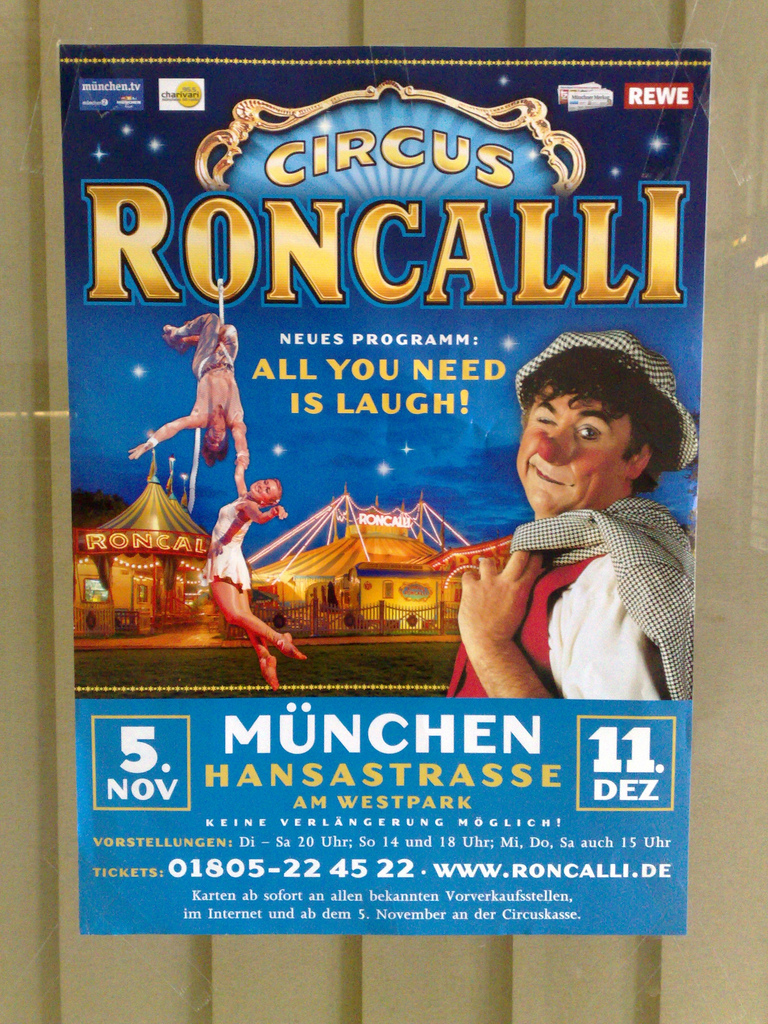
I snapped a photo and then Oliver and headed off for the BMW Museum near Munich’s Olympic Park (a fruitful diversion, but not something I would go out of my way to visit unless you’re a fan of brand BMW).
We met up with Catherine back at the central station at 6:00 p.m. and I proposed the idea of seeking out the circus (we were fresh off watching the PBS series Circus, and so well-primed for the opportunity). Catherine was enthusiastic, and so we decided to find the circus first, then find something for supper.
Unfortunately the Circus Roncalli website is almost completely unusable on an iPod Touch, the only web-connected device we had between us, and so exactly where to find the circus was somewhat unclear.
I consulted the U-bahn map and spotted a Westpark stop and reasoned that if we simply took the U-bahn to that stop and wandered around, we’d likely find the circus.
I was wrong.
When we emerged into the chilly Munich night at Westpark there was no circus in evidence. I popped in to a fried chicken shack to seek directions and the clerk there looked at me as though I was on the wrong planet – “you’ll need to take at least 3 buses to get there,” she said.
I decided to ignore her advice, as it wasn’t hopeful enough.
Looking again at the map, I reasoned that the circus must be in Westpark, the park, which appeared to be just up the road. So we headed in that direction on foot. The sidewalk gradually deteriorated as we entered an area of road construction, but we forged on. Eventually we came to a highway overpass that seemed unpassable by pedestrians, but I spotted an underpass that seemed to lead into a park – a park! just what we were looking for! – and so we headed down, passing, it seems in retrospect, into the heart of the construction zone, with its machinery and muck and general chaos.
By the time we ended up in darkness, tripping into a (shallow) hole that we couldn’t see, we reasoned it was time to abandon ship. We made our way back to civilization and stopped in at a gas station and asked the clerk to call a cab for us. She decided she couldn’t do this, but would, instead, give us the address of the gas station and the number of a cab company.
I tried, in vain, to call a cab. And so I did what I should have done in the first place: I called the number on the Circus Roncalli poster.
A very pleasant woman in the box office answered on the first ring. She spoke English. She confirmed that we were in the wrong place: yes, the circus was at Westpark, but at the other end, the far away other end of the park. We needed to take a cab. But tickets were still available, so if we hurried – it was now almost half past seven – we could still make the show.
At this exact moment Catherine, using some sort of voodoo magic that I don’t completely understand, made a taxi stop immediately in front of us. We got in. I showed the driver the circus poster on my phone. He drove us there in 10 minutes (it would have been a very long walk should we have been able to find our way through the muck). He dropped us directly in front of the box office. We gave him a healthy tip.
Lest you think our troubles were now over, it turns out that (a) circus tickets in Germany are expensive (or at least more expensive than the $2 I remember paying when the circus came to town in the 1970s in rural Ontario) and (b) you cannot pay for circus tickets with a credit card.
The total cost for the three of us was 86 EUR – about $110. I got out my wallet (we weren’t walking away at this point) and scoured my pocket for change. By some miracle, I managed to cobble together exactly 86 EUR. I mean exactly, like “oh, and here’s the last 10 cents!”
Tickets in hand, we joined the line and got a look at the circus tent from the outside:
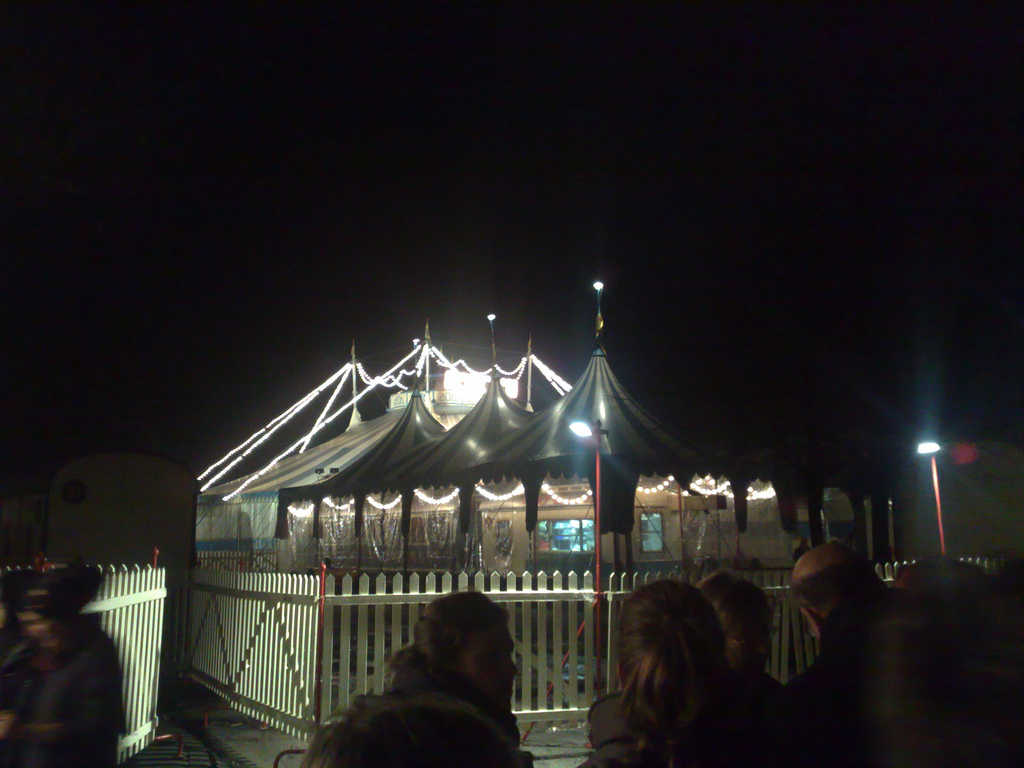
About 10 minutes later the line started moving forward and we made our way to Section B and found a seat, picking up some pretzels and popcorn with the dregs of Catherine’s change purse on the way.
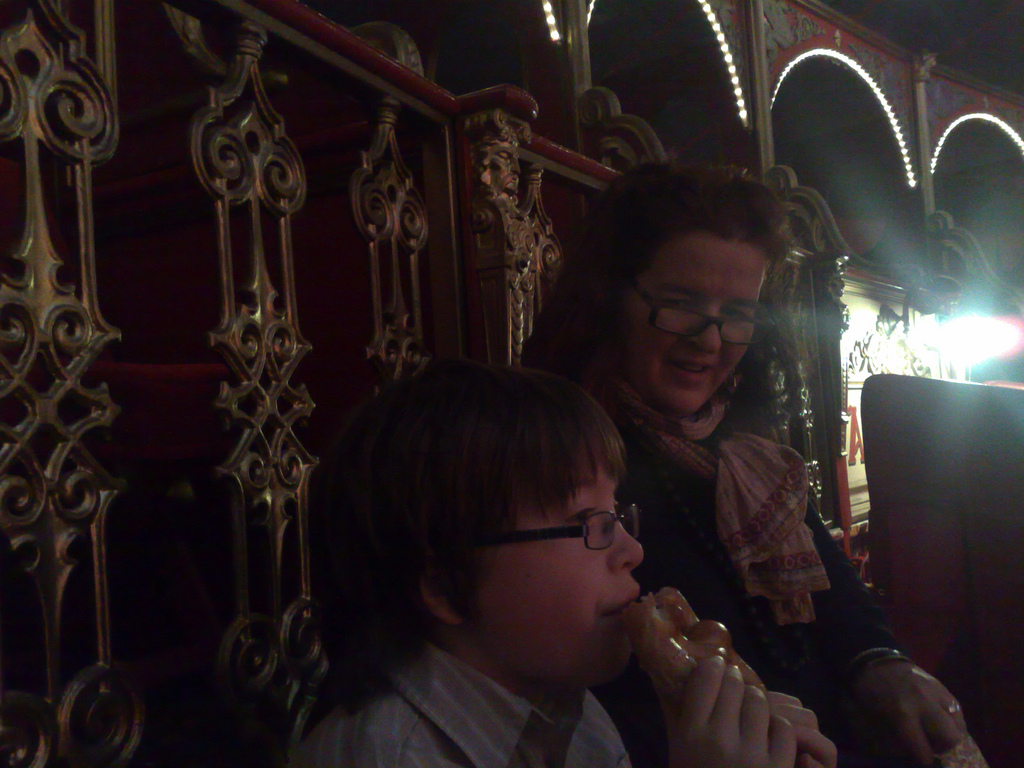
The crowd – the tent was almost full – was mostly adults; I think Oliver may have been one of only 2 or 3 people under 18. A school night, I imagine; not time for family circus night. The ring awaited, bathed in spotlights:
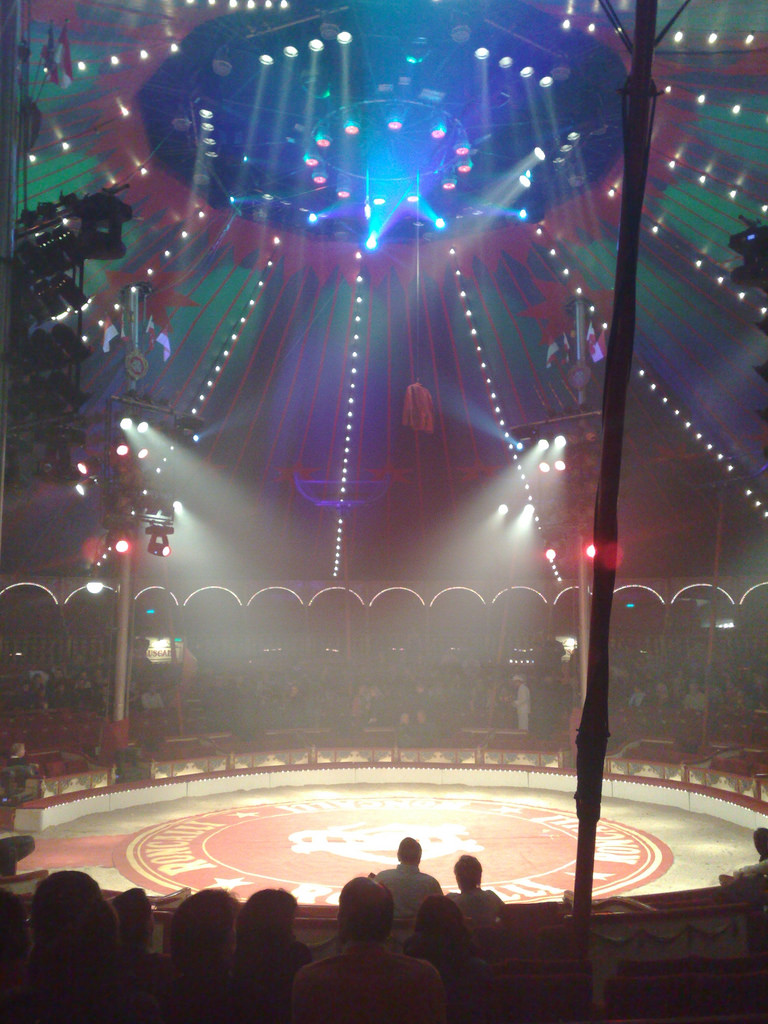
And at 8:00 p.m. a Boomer Gallant-like janitor figure walked into the ring, transformed himself into a clown, and the circus began.
It was fantastic: two hours of unrelenting action, woven together by Beatles music, a loosely-knit drama about the clown cum janitor, and featuring some amazing performances by acrobats, jugglers, bubble-blowers, and strongmen. There were horses, and dogs. An intermission, and then more. By the time it was all over – the closing sequence saw the janitor welcomed into the circus family – there were tears in our eyes and smiles in our hearts. The evening was worth every cent I dug out of my pockets for it.
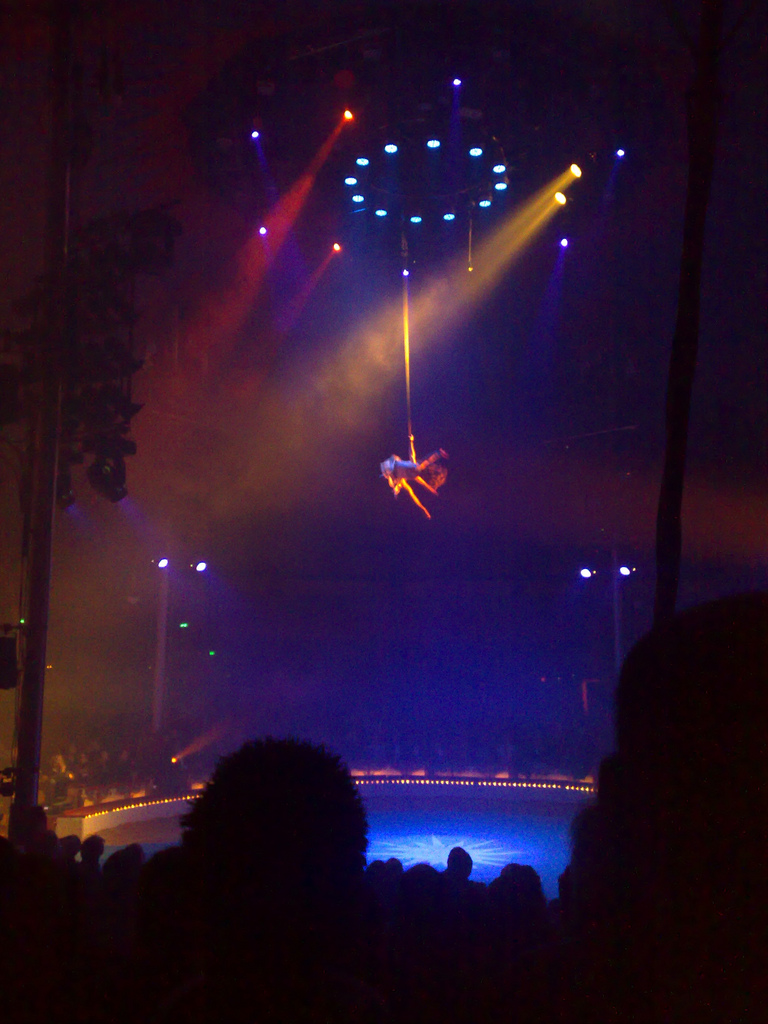
We headed off into a now-drizzling night and asked for directions to the bus home, which turned out to leave just around the corner. An hour and a bus and tram right later, we were snug in our beds, ready to catch the plane back to Charlottetown in the morning.
Sometime last month I came across a factoid while surfing the web: on July 12, 2011 Neptune will have completed its first orbit of the sun since it was first discovered in 1846. This stuck in my head, and when it came time to find a theme for a holiday card to create with my letterpress, it seemed perfect (and also a way of avoiding the banality of Happy Holidays and the insincerity, for me the irreligious, of Merry Christmas).
But how to craft a Neptune. I’m a printer, not an artist, and my ability to represent the world in things other than letters is extremely limited. But I decided to make a go of it and see if I could make a reasonable facsimile of something Neptunian on paper.
I started with a 3 inch by 4 inch piece of Speedyball’s Speedy-Carve that I bought at Michaels out at the edge of town (they have a tiny selection of lino-block printing gear, but it’s enough to start out with):
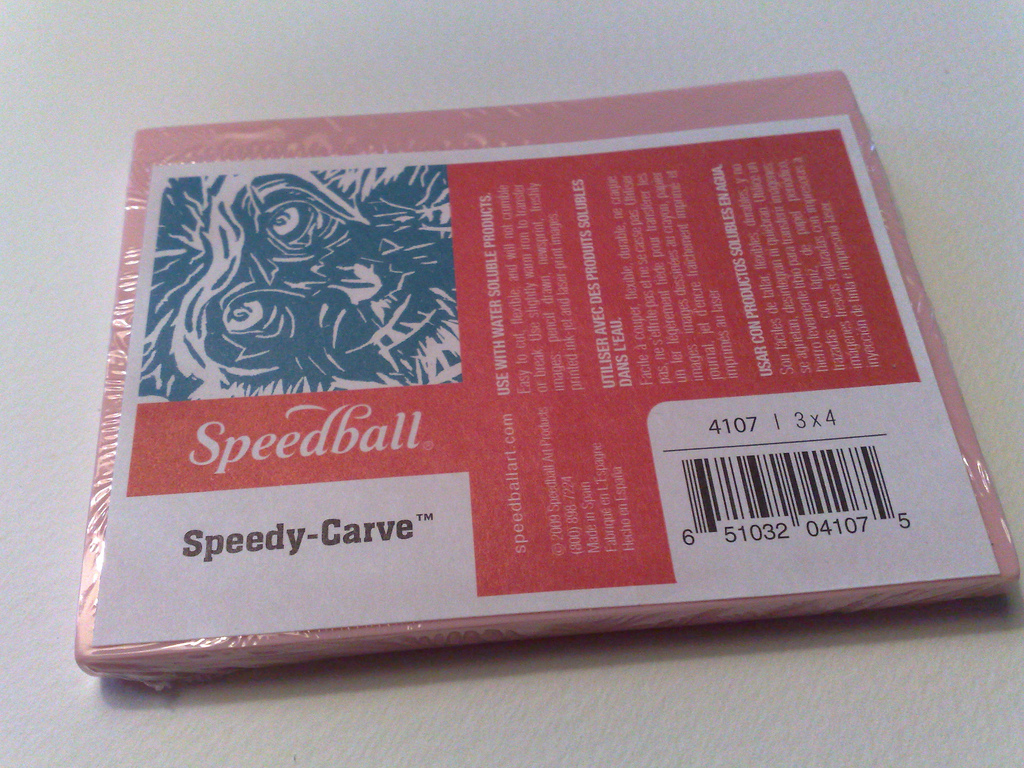
The Speedy-Carve blocks have the benefit of being relatively forgiving to the novice carver, but are otherwise a thoroughly unfulfilling medium; they lack the heft of real lino-block and the effect is not unlike carving a pencil eraser. But they’re cheap, and I needed to start somewhere. I tried to get an idea of what Neptune looks like using Google Image search and then made a sketch on paper:
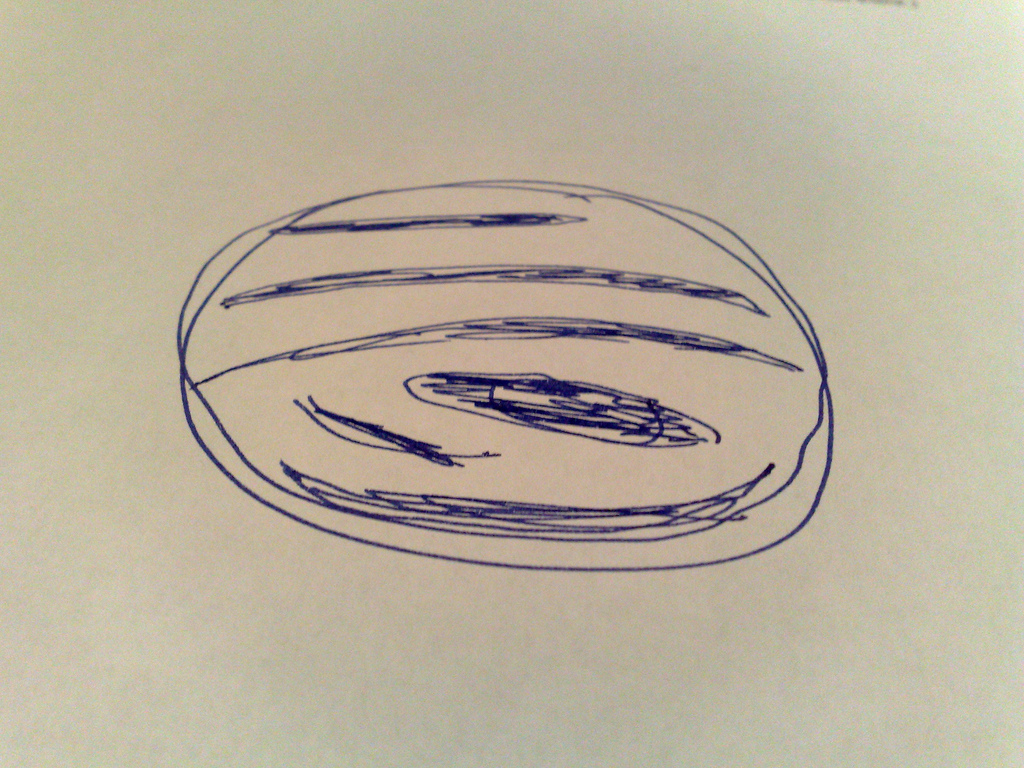
The parts the “stick out” are the parts that get printed, so I had to carve away most of the block. To do the carving I fortunately had the lend of a very nice set of carving tools from Dave via Erin:
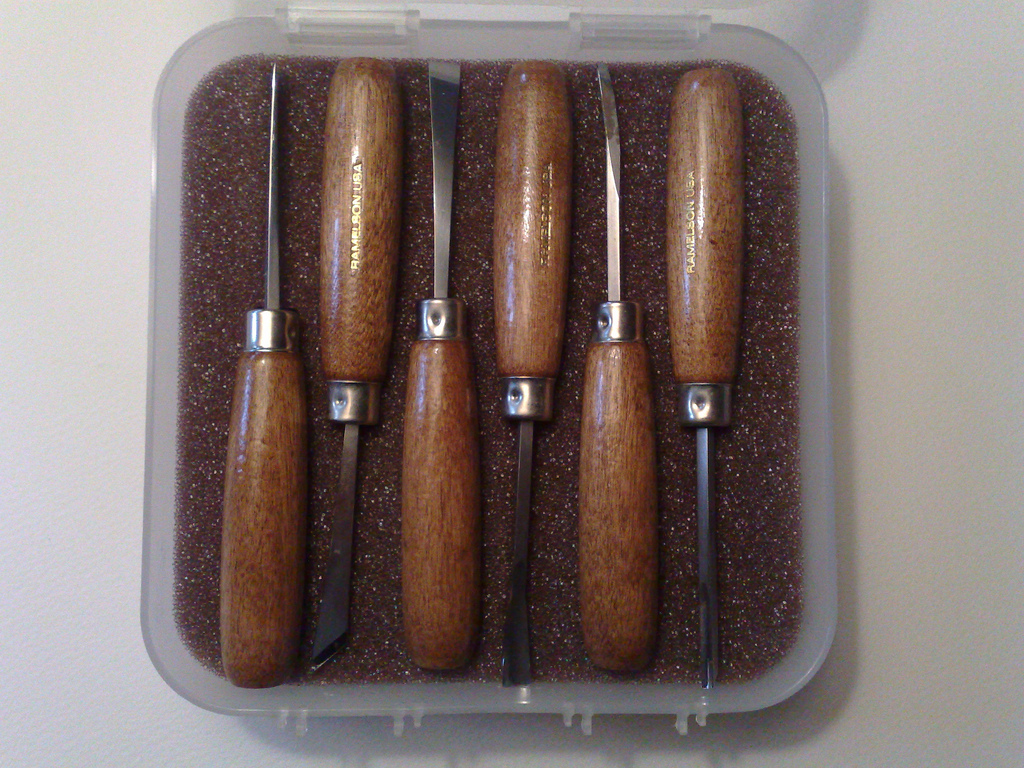
The end result of the carving was this:
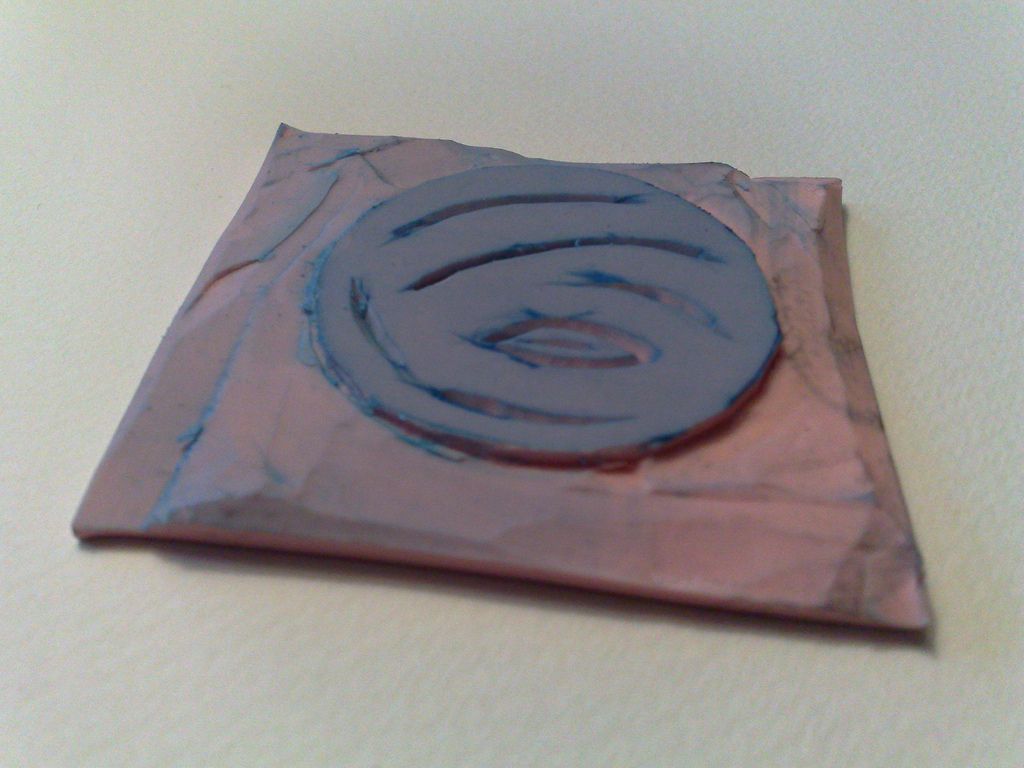
Rather than trying to print this on the letterpress, I decided to just ink this block and lay the card blanks over and roll the back with an empty ink brayer. I would have preferred to use water-based ink to print this part of the card, but I only had soy-based blue ink (the dregs of a can I generously received from Kwik Kopy a few months ago), to things were messier and stickier and harder-to-clean. But it worked.
I printed 30 cards on pre-cut and folded Strathmore Stamping Cards I picked up in Halifax at DeSerres on Barrington Street (the cards were fine for the lino-block printing, but the paper wasn’t the greatest for using on the letterpress and I wish I’d invested in a better, more appropriate grade of paper).
I set the “holiday messaging” in Gill Sans 12 point and once the blue ink had dried overnight I printed the message on the 21 cards that emerged from the block printing without ink splattered in inconvenient places. The end result looked like this:
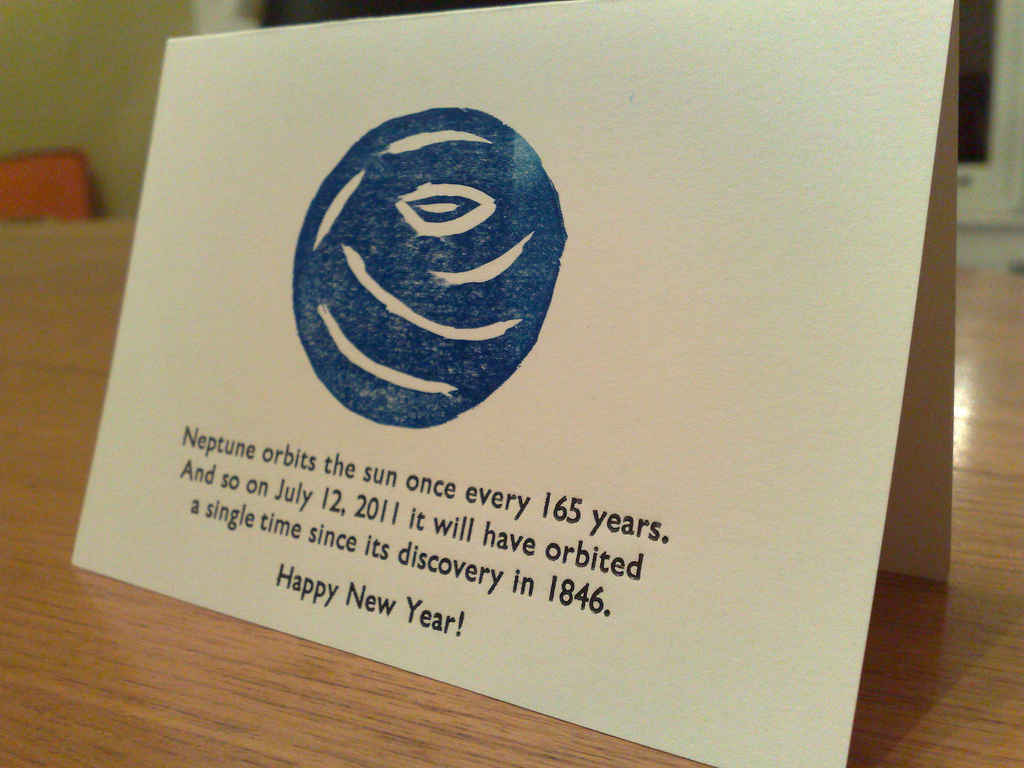
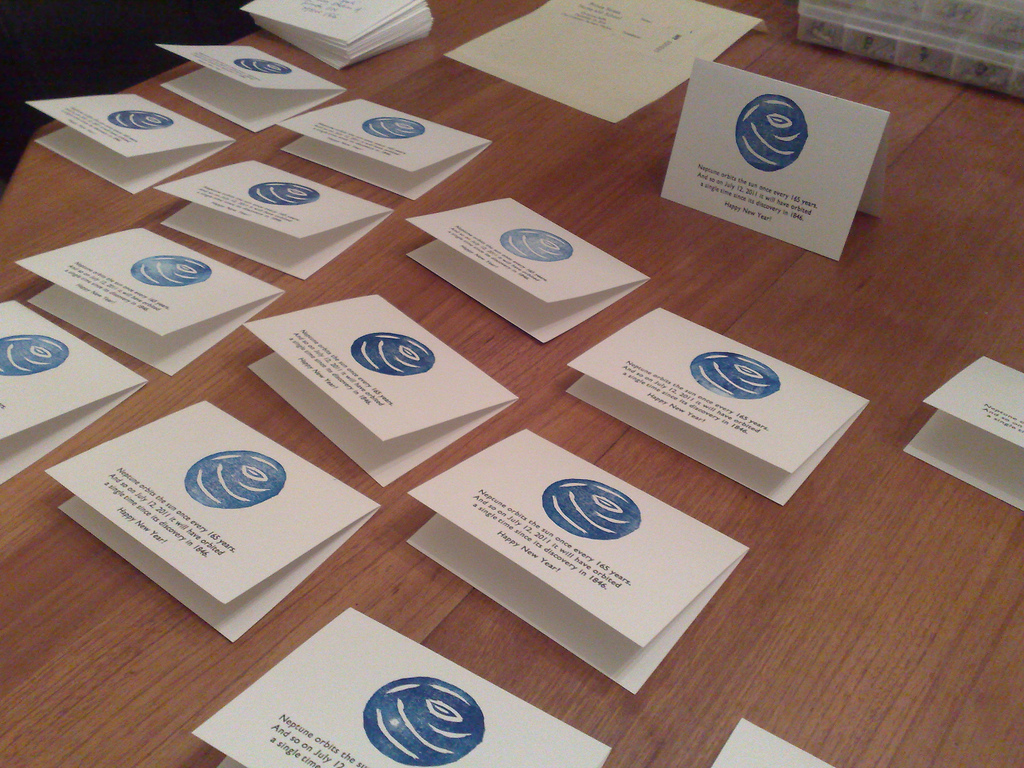
The cards aren’t 100% satisfying to me, and if I’d had more time and taken more care I could have made them more to my liking. But I’m taking a “it’s better to do a lot of printing jobs somewhat well than to do no printing jobs perfectly” approach to learning letterpress (“release early, release often” we say in the software world). So they’re Good Enough.
I’m fortunate to have more than 21 friends and family, so I was forced to choose a random group of recipients: I ended up sending 4 to Europe, 3 to the U.S., and the remainder to PEI and the rest of Canada. If you received one (or are about to: mail is slow), please enjoy; if you didn’t, then you’re still invited to have a Happy New Year and I’ll catch you at Valentines or Easter.
While I’m making shows-on-Netflix recommendations, let me suggest you watch The Big C, a half-hour dramedy starring Laura Linney. See the review in The New Yorker for a quick setting of the scene.
Linney is brilliant, as is Gabourey Sidibe. You either love Oliver Platt or you don’t; I go back and forth. He’s basically playing a less-debauched version of the same character he played on Huff (which you can also watch on Netflix, and which I also recommend).
We watched 4 episodes in one go last night – one of the perils of Netflix is that it enables obsessive previously-on watching like this – and we’ll likely return tonight.
If you’ve got a streaming Netflix subscription, or other access to the BBC Television back-catalogue, I recommend The State Within, a 7-part series set in Washington, DC made in 2006 starring Jason Isaacs. It’s a well-crafted “conspiracy thriller.”
After supper tonight I had an idea come to me for a calendar I could set to fit on thin strips of beige card stock that I purchased at the October 2010 Wayzgoose at Gaspereau Press in Kentville. The event included an “offcut paper sale” – basically Gaspereau sells the extra paper they’ve hanging around their shop, and the bits and bobs that are left over after cutting.
I decided to strike while the idea was still fresh, and excused myself to the letterpress shop, apologizing to Oliver that I wouldn’t be able to read him a chapter of The Steps Across the Water tonight (it’s a really great book, by the way).
The idea was born of the limits of circumstance: I don’t really have a way of setting boxes or lines, so if I wanted to make a calendar, I’d need to come up with a format that didn’t require them. This is what resulted:
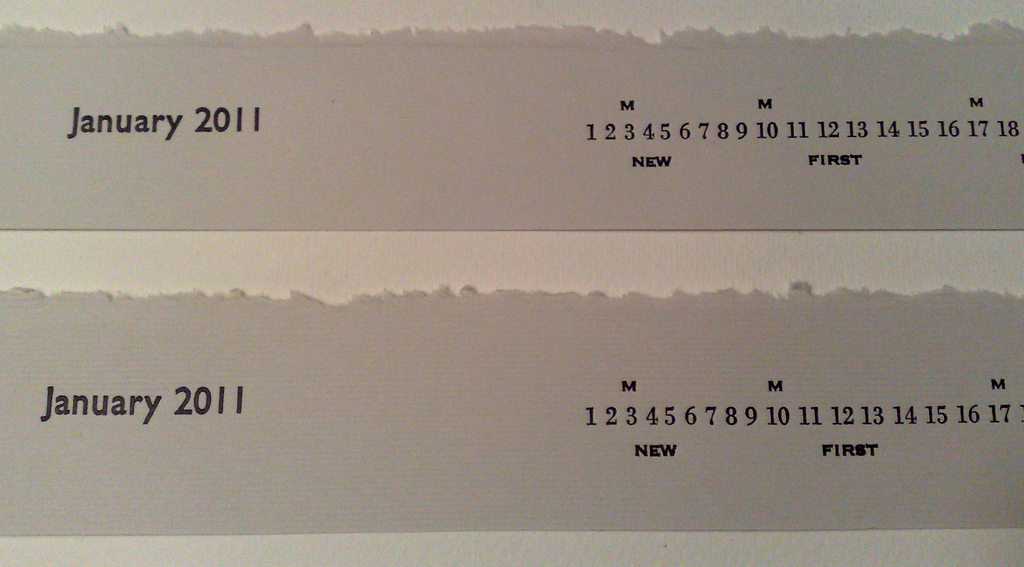
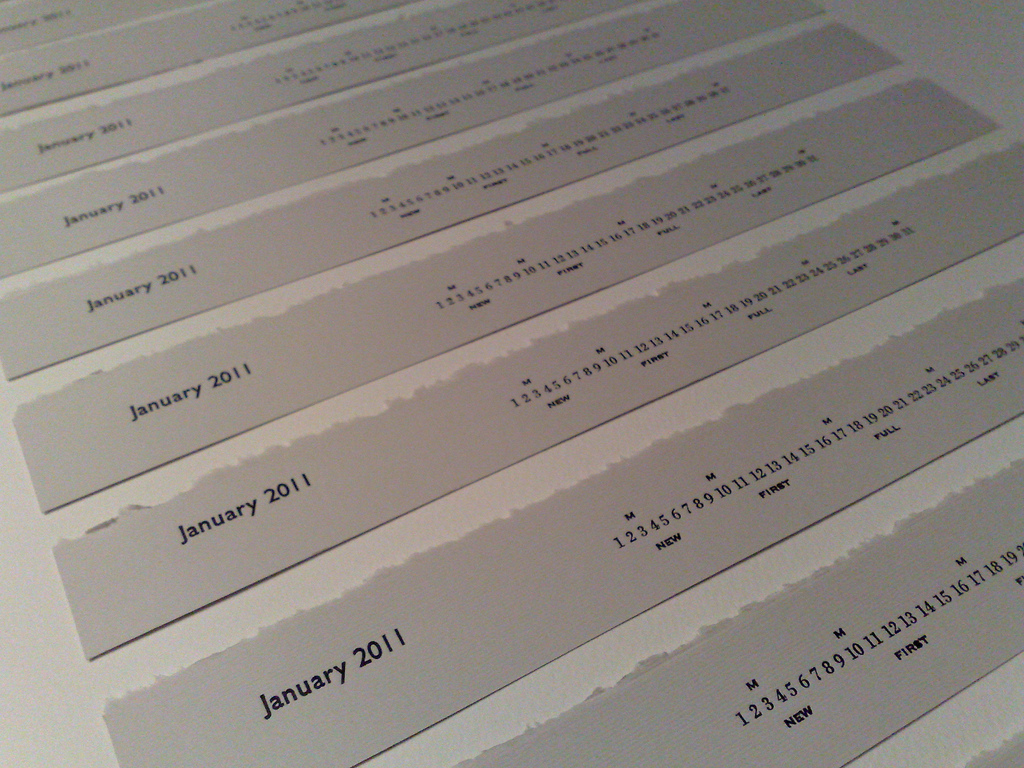
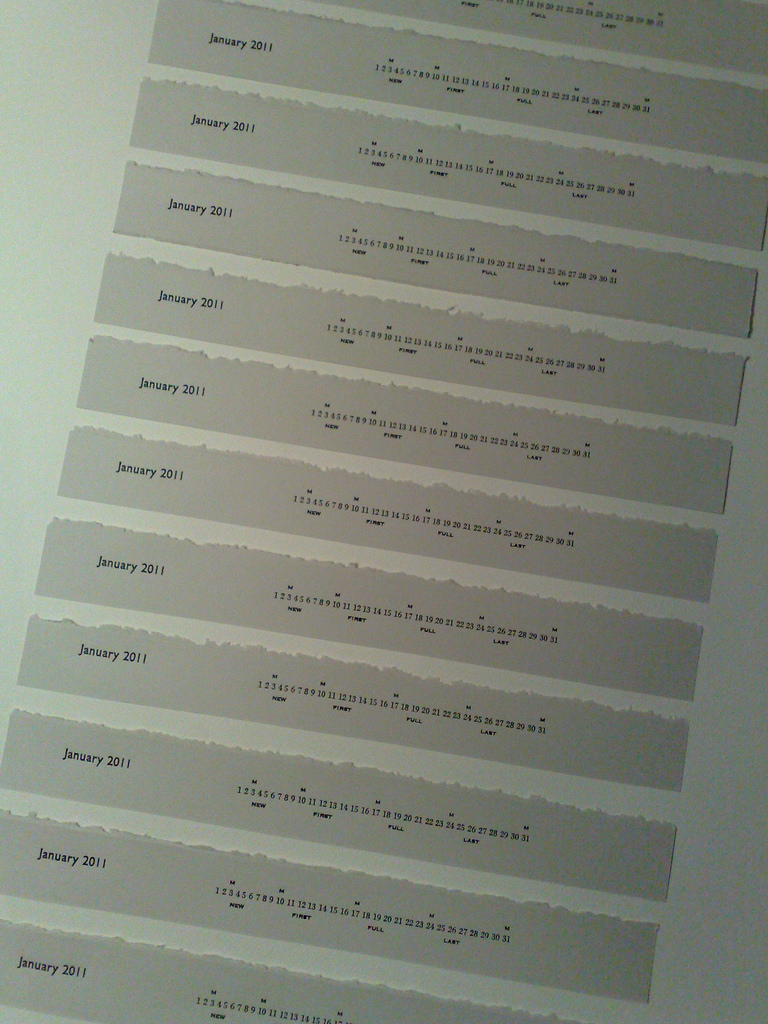
I set a straight line of day numbers, from 1 to 31, in 12 point Bodoni (the only face I have with enough numbers to do so), and then set new, first, full and last for the phases of the Moon below, and M over the Mondays above, in 6 point Spartan (a somewhat worn out font that I inherited with the press). This made for a 40 pica line, just short enough to lock inside my 8 inch by 5 inch chase. I printed this in one go, then swapped in the January 2011, set in 18 point Gill Sans, and printed this in a second (my original plan was to print this in a second colour, by circumstances intervened again: I only had a single rag to clean up with, so I couldn’t clean up a second colour!).
The printing is a little uneven – the Spartan digs in a little deeper than the Bodoni – but right to left it’s relatively consistent, and the end result is pretty close to what was in my head 3 hours ago, so I’m satisfied.
I’ve got a few dozen of the calendars here in the office; if you’d like one, and you can pick it up (they’re a little too cumbersome to mail without getting into creative enveloping techniques), just drop me a line.
I’ve a feeling that Catherine’s going to think we went too far with this hair cut. Please note that Oliver’s head did not get bigger as the result of the haircut: it’s an optical illusion.
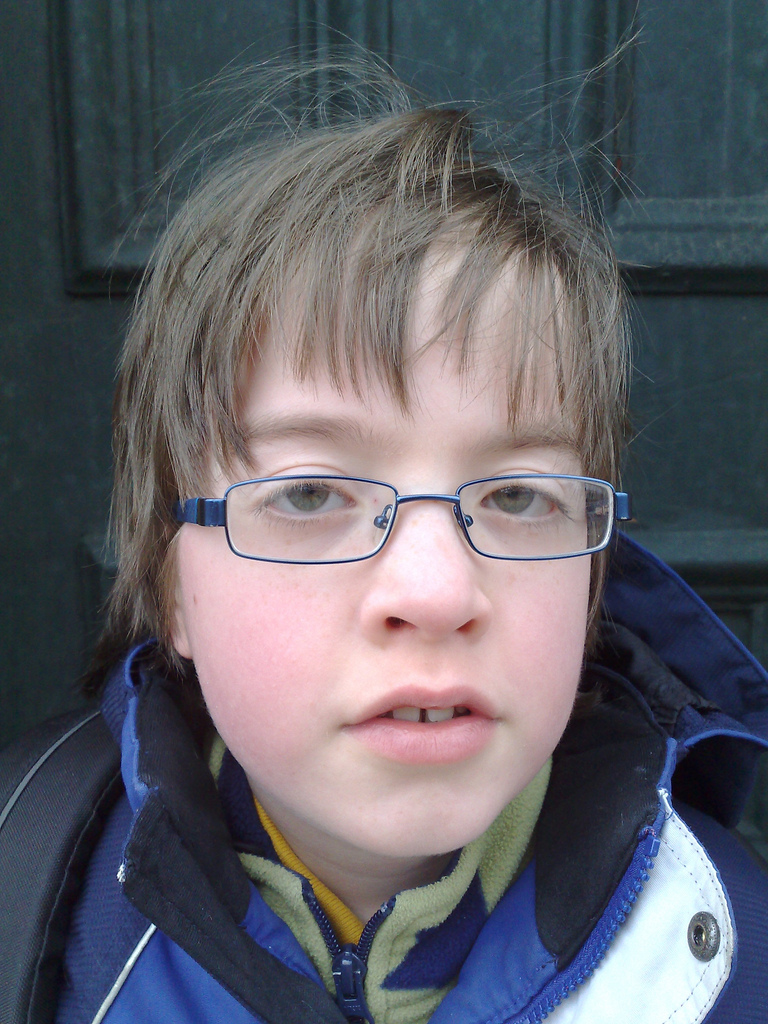
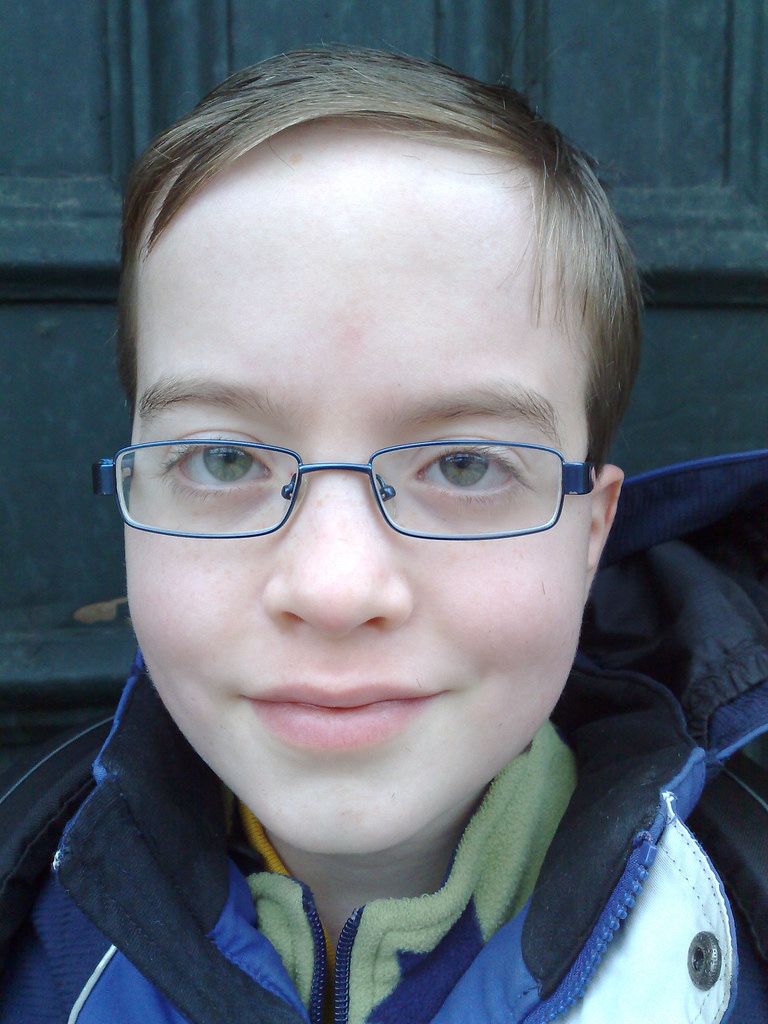
I’ve been in “so, how was your trip!” answering mode for the last week or so since we returned from our trip to Europe, and I realized that lots of the tiny details, the details that really shape a trip, get left out from the quick conversations that result. So there, for posterity, are 15 small highlights from our trip. They might never make it into a conversation, but together with hundreds of other tiny things, good and bad, they’re what really make a trip memorable.
Coffee at Munich Airport
We arrived, dog-tired after a flight to Philadelphia, a 5-hour layover, and an overnight flight, at Munich Airport early in the morning. We had some time to kill before our train to Basel, and so we found our way to the plaza outside Terminal 2 where we had coffee outside. It was just warm enough, and the sun was just in the right place to take the edge off. It didn’t cure our jet lag, but it sure helped.
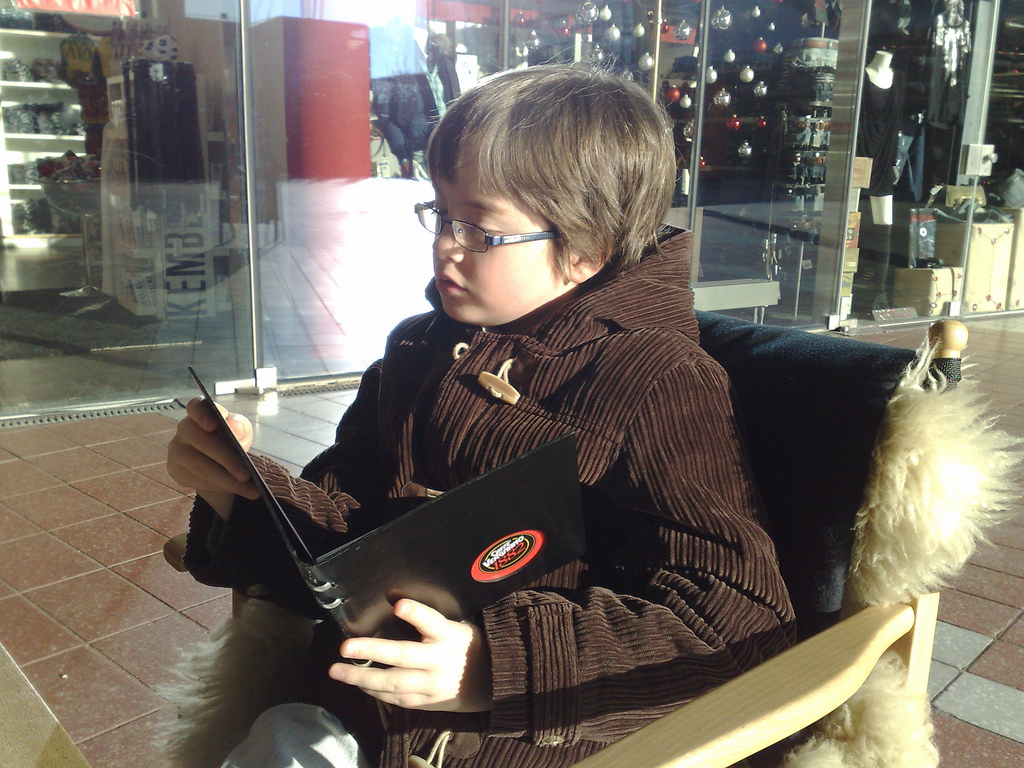
Buying a Nintendo DSi Charger
For some reason you can’t use a North American Nintendo charger with a plug adapter in Europe. We bought a Euro-charger in the spring in Wolfsburg, but of course it went missing in the interim, so we had to find a replacement. Fortunately this was easy: across the street from the central train station in Munich is a Karstadt department store, and in the electronics section they had just what we needed (the store itself brought back memories of Eatons; I’d forgotten what a good department store was like).

A Ride Along Lake Constance
Our train trip from Munich to Basel consisted of a sleek ICE train from Munich to Ulm followed by a pokey regional train from Ulm to Basel. It was at least 25 degrees C on the regional train, and Catherine and Oliver conked out asleep soon after we boarded. I pulled out my Nokia N95 to pass the time, and managed to cobble together a data solution from an old Vodafone SIM card with some credit left on it, enough to fire up Google Maps and realize that the train was passing along the shore of Lake Constance, which brought back memories of a very bizarre staging of The Ride Across Lake Constance I saw at The Union in Peterborough, Ontario in the late 1980s. I snapped a photo as Lake Constance whizzed by.
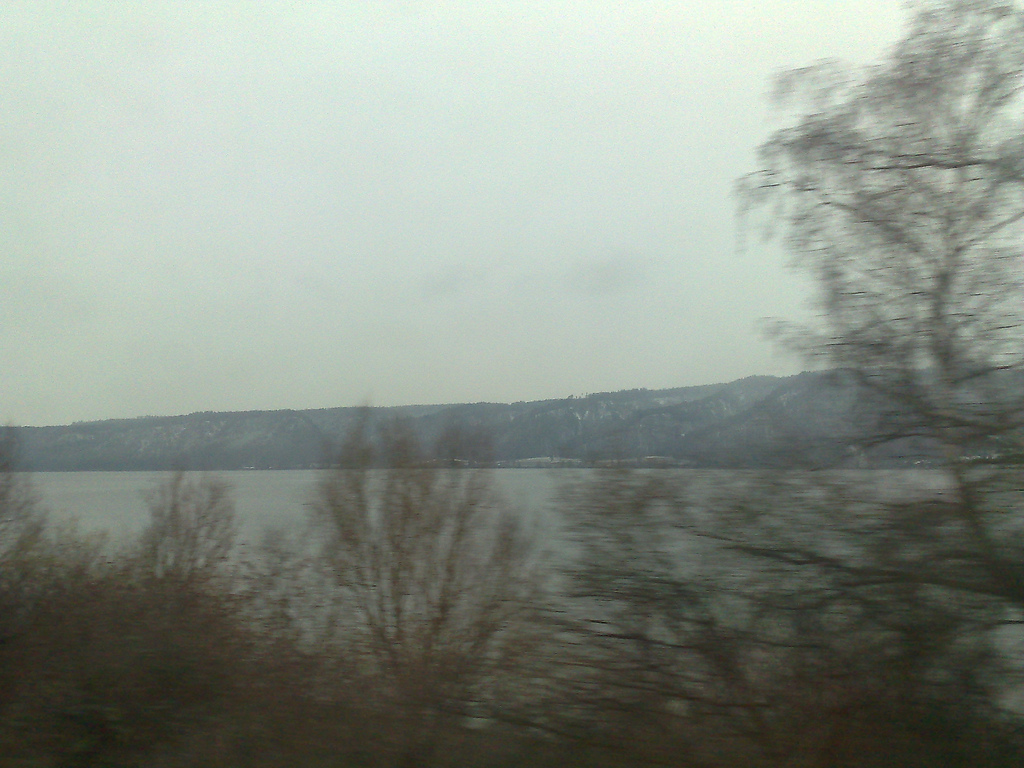
Supper at Gengis Khan Grill
When we checked in to our hotel in Saint Louis, just across the border from Basel in France, we asked the front desk clerk for a recommendation for a place to eat. She directed us to a French restaurant in a hotel on the next block, which turned out to be closed, rather than to the Gengis Khan Grill, which was right across the street. So we went to the Gengis Khan Grill. And had a great cook-it-yourself-at-the-table meal.
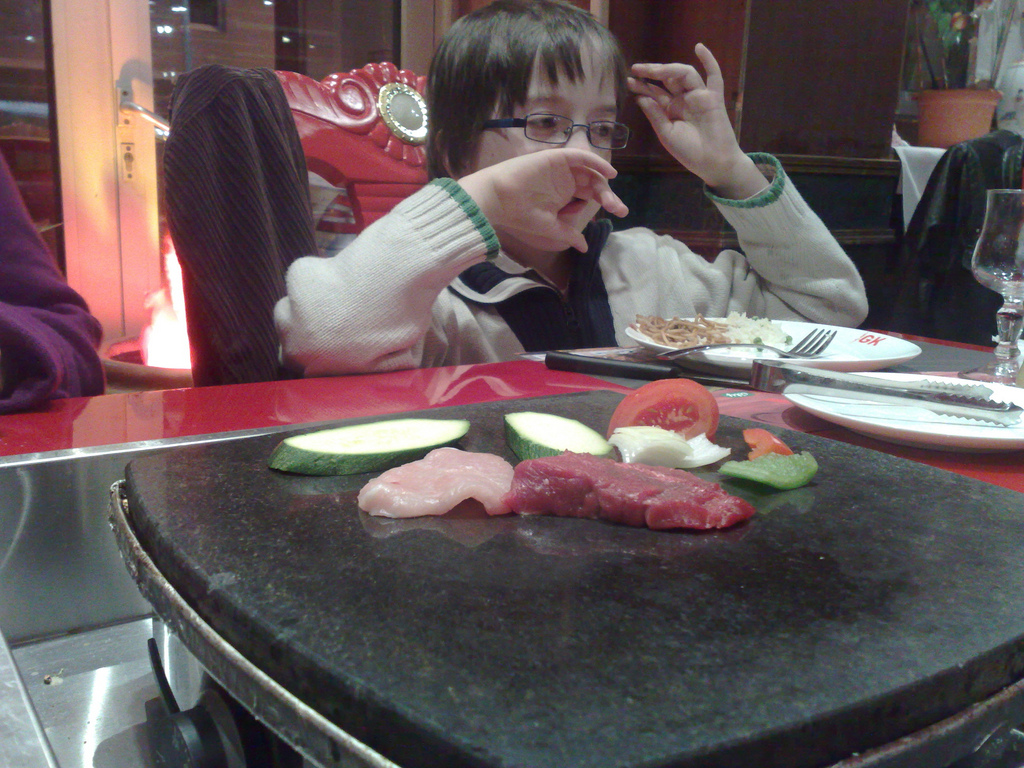
Waffles on the Sidewalk
After spending the afternoon at the Basel Paper Museum (a delight), we walked up the hill from the Rhein toward downtown Basel and stumbled across a restaurant holding some sort of special Christmas event on the sidewalk that involved selling waffles and apple cider and giving away crème caramel. Of course we stopped.
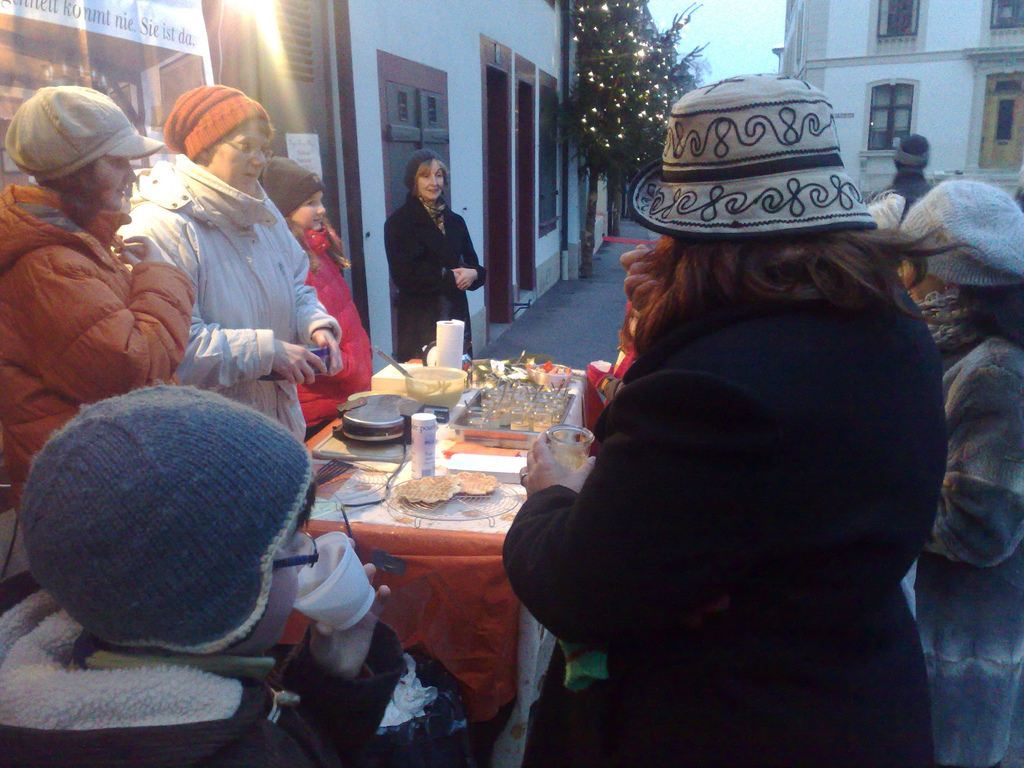
Coffee in Venice
Our friend Guy recommended a place for coffee near St. Marks in Venice, and gave the directions as follows:
From the San Zaccaria Vaperretto stop, turn left and walk up to the Pallazzo D. Prigioni (the building before the footbridge that looks onto the Bridge of Sighs). Hugging the right of the building, is an alleyway, just set back under the cloisters. Walk up there, about 200 metres, and about 30 metres before you hit the small square, it’s on your left. A small shopfront (no tables), with cakes in the window.
Miracle of miracle we were able to follow Guy’s directions (despite the Bridge of Sighs being obscured by scaffolding) and we enjoyed excellent coffee and pastries on a cold, damp late afternoon in Venice.
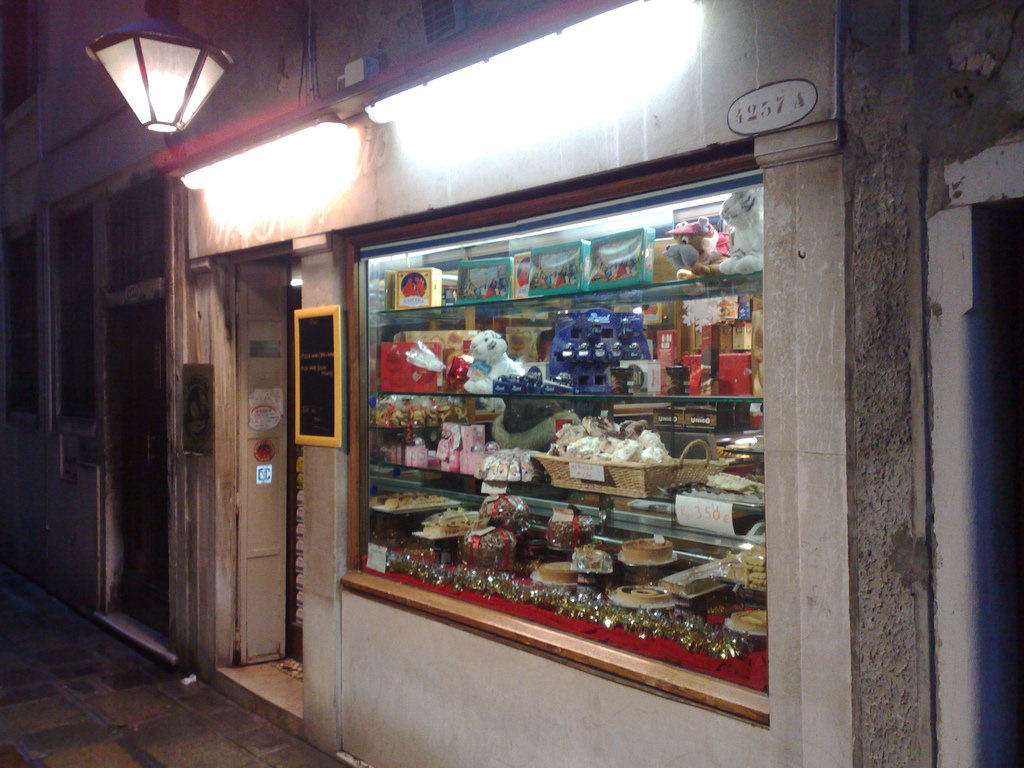
Venice to Ljubljana by Bus
It is rather difficult to get from Venice to Ljubljana: taking the train requires a long detour through Austria, there are no flights (and it would be absurd to fly, as it’s so close) and bus information is hard to come by. Fortunately I found Florentia Bus, a company with a Florence to Sofia (Bulgaria) run that stops both in Mestre (on the mainland at the end of the causeway to Venice) and Ljubljana.
Should you ever find yourself needing to catch this bus, here’s how to do it: first, buy your ticket online to save language and money confusion; next, take the train from Venice to Mestre (many times an hour; cheap); at the Mestre train station, exit and turn right, walking past the tiny bus station (where you might stop and pick up snacks) and onto Via Ca’ di Marcello; walk to the middle of the block, past the grocery store and the sketchy-looking industrial yard where you’ll find a tiny sign that says “International Buses.” You will not believe that this is where you are to catch the bus, but it is. Wait. The bus may be late. Be patient. Wait some more. Eventually, the bus arrives, you show your receipt, board, and enjoy the ride to Ljubljana with your new Bulgarian bus-mates.
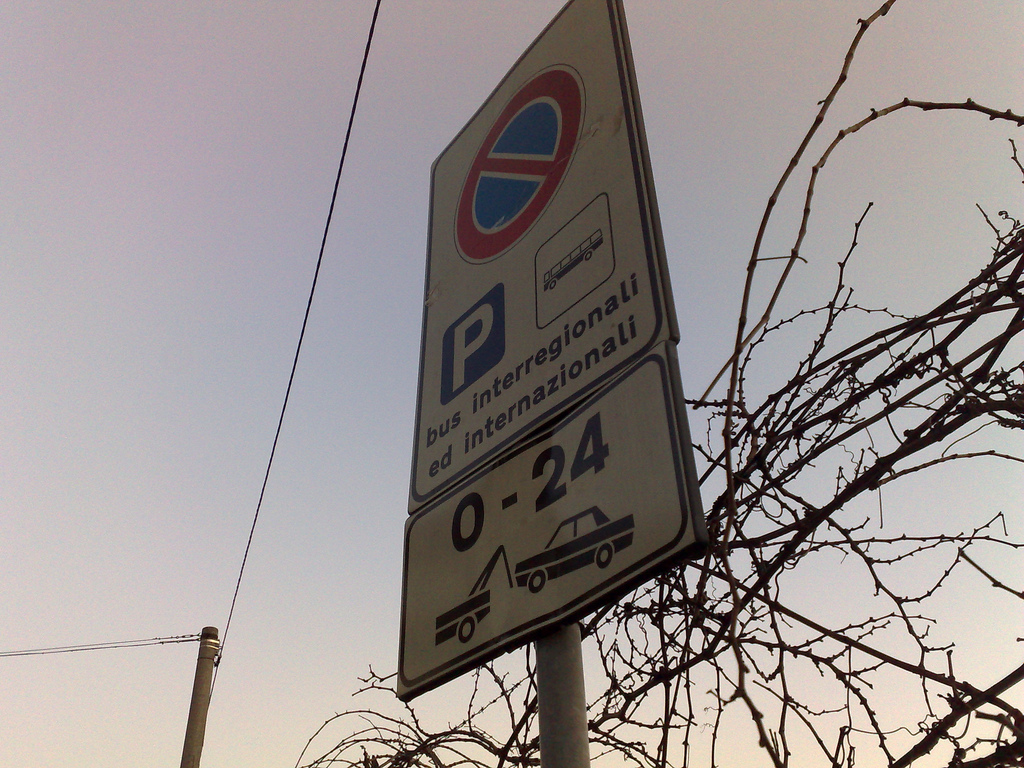
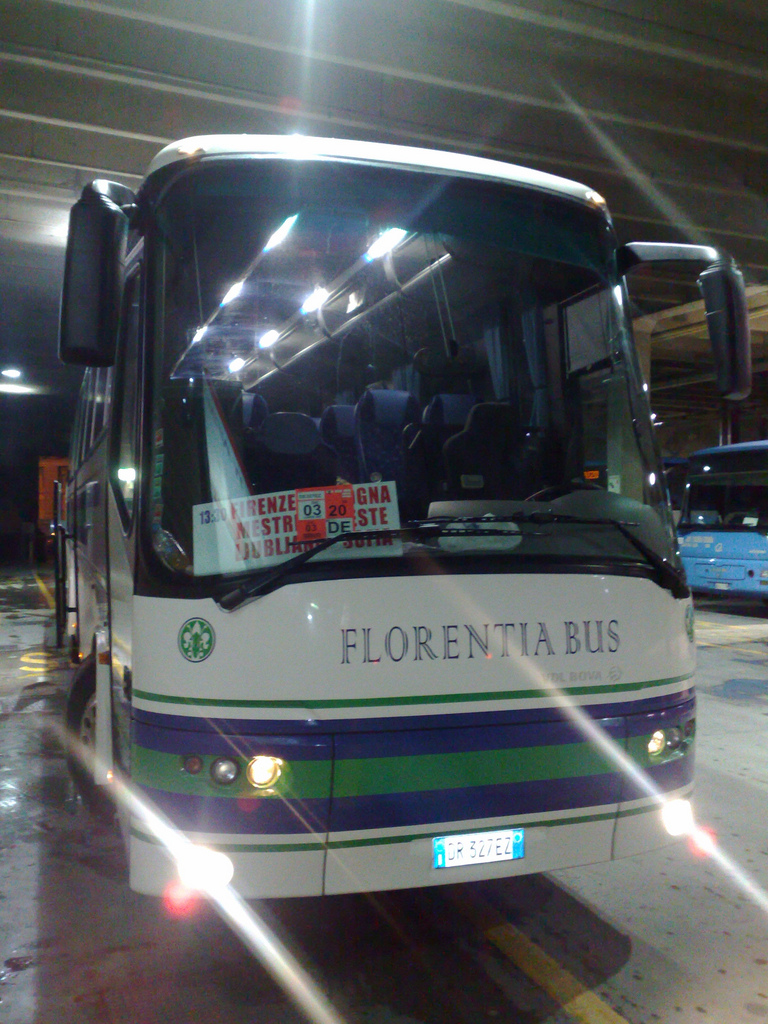
If you find yourself needing to use the toilet while on-board the bus, you will not find it at the back of the bus, North American-style, but rather in the “basement” of the bus, entered from the side of the stairway that comes up in the middle of the bus. Please note that you are not allowed to pee standing up.
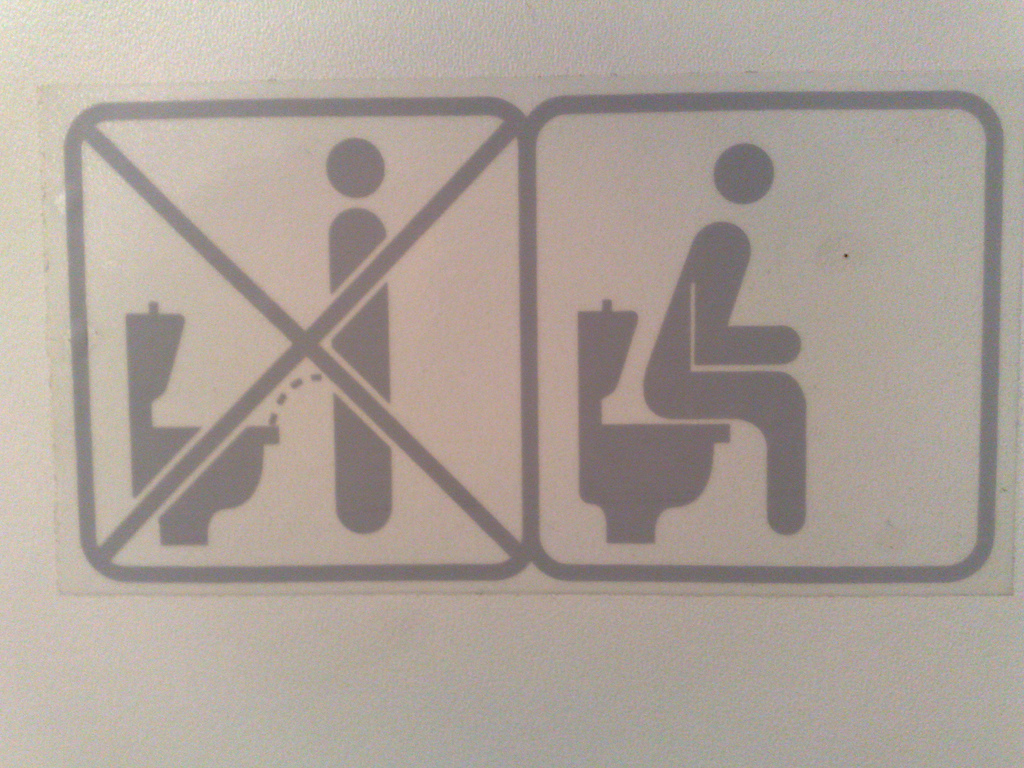
Breakfast at City Hotel, Ljubljana
When my father and I visited Ljubljana in 2004 it still had a vaguely post-communist air about the place, and the hotel we stayed in, while pleasant enough, felt more “Soviet-style apartment block” than “urban retreat.” Not so City Hotel, where we stayed this time: it oozes “designer hotel,” but it’s relatively cheap. And the best thing about it was the buffet breakfast, which was, bar none, the best hotel buffet breakfast I’ve ever encountered.
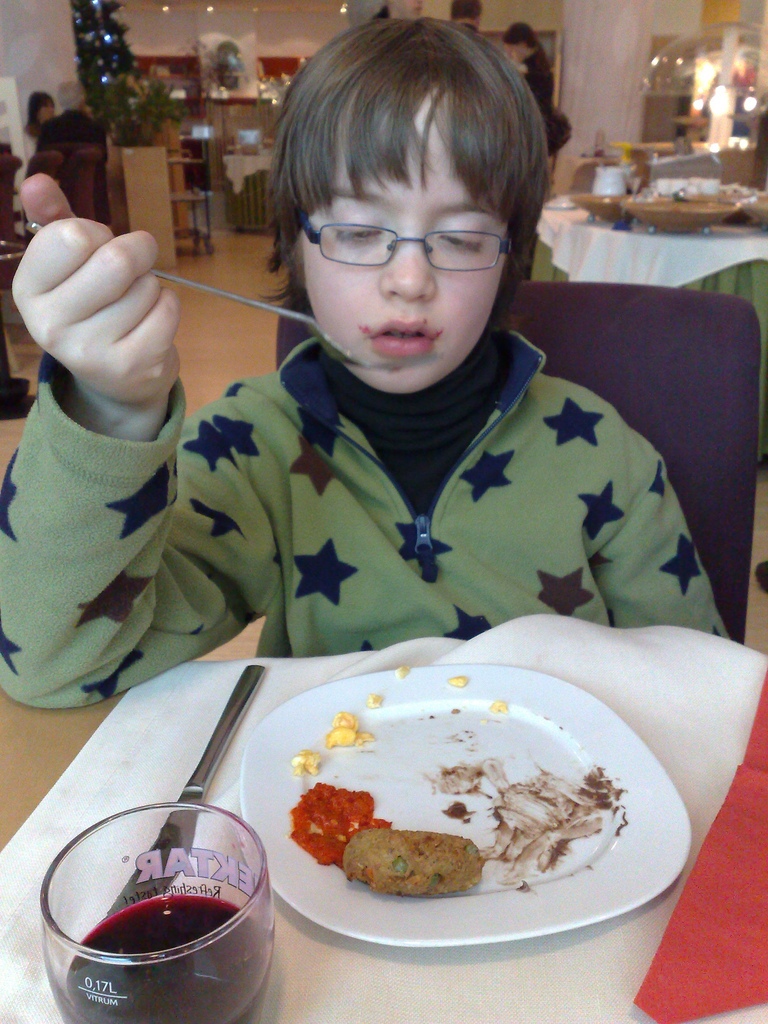
Sixt Car Rental
There are a lot of places to rent a car in Ljubljana. To be honest, I choose Sixt because I like the brand identity: bold, black and orange, sans serif. Turns out they also offer quick, friendly service and well-maintained cars. Our tiny Hyundai served us well, even on the Croatian highways with their 130 km/hour speed limit. The downtown Sixt counter is handily located at the end of the bus terminal. There was a small screw-up with billing – what should have been a pre-auth on my credit card was processed as a charge – but this was quickly cleared up by email after we returned home.
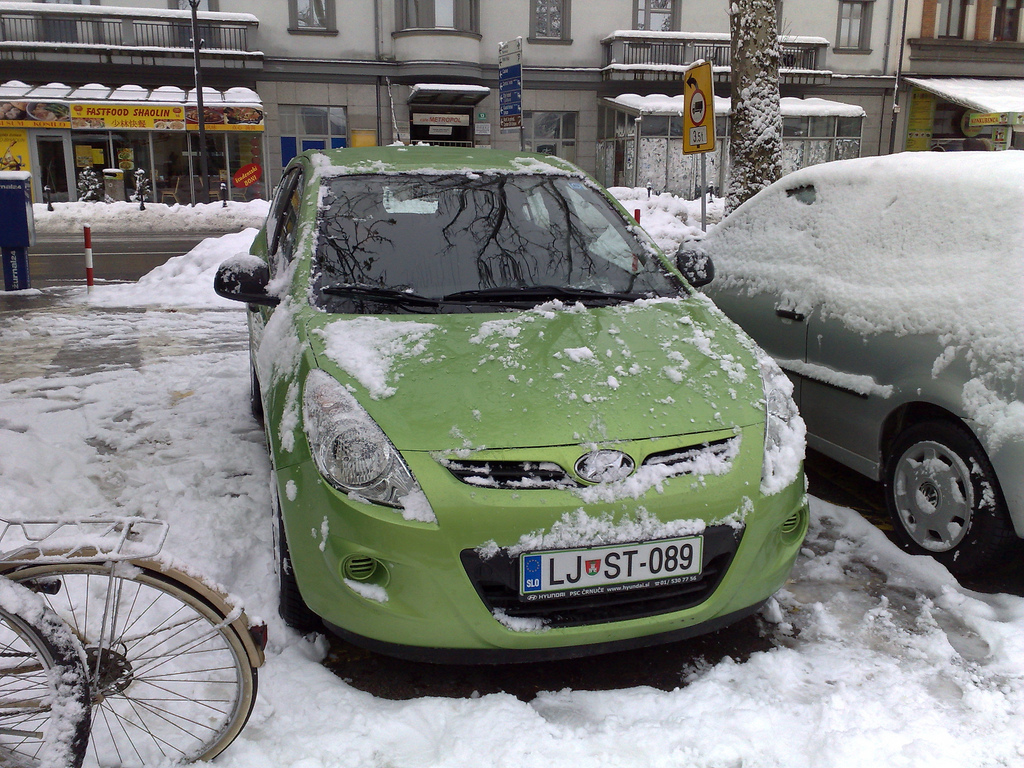
Great Aunt Manda
In 2004 my father and I visited my grandfather’s half-sister Manda and her husband at their farm in Dišnik, about an hour east of Zagreb. We planned to return on this trip, and it was only through a last-minute email from a Peruvian cousin that we learned that her husband had since died and she’s moved into a nursing home in nearby Marino Selo. Which is where we found her late one sunny afternoon. We had a good visit, although the language barrier – nobody in the place, including Manda, spoke and English and we no Croatian. As it turns out there’s a Canadian connection to the nursing home: it was funded, in part, by Kroum and Eva Pindoff, Canadians who founded the old Music World record store chain.
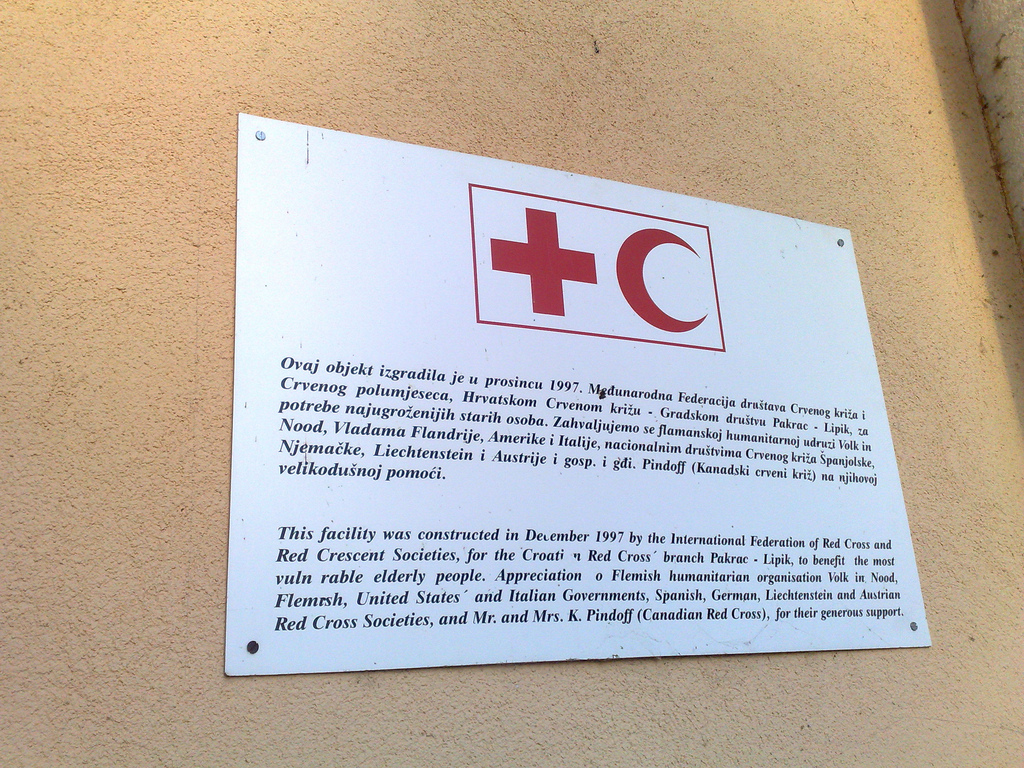
Barun Rukavina
At the history museum in Gospić – a town in central Croatia near where my grandfather was born – we found this engraving of Barun Ivan Rukavina from 1849.
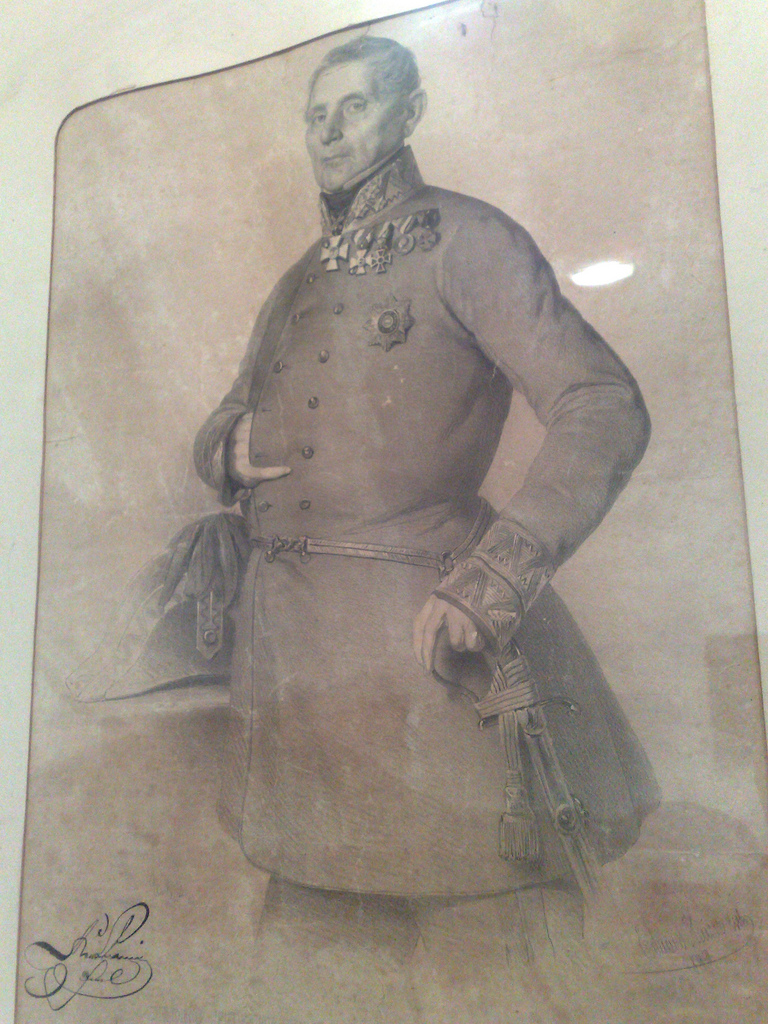
Turska Kula
In Perušić, just up the road from Gospić and near Konjsko Brdo, my grandfather’s birthplace, is the Turska Kula, an old, old tower, high the hill overlooking the village, made of stone. We drove as close as we could and I ventured up the last bit alone, on foot, to capture the view. Here’s the Catholic church that holds the records of my grandfather and his family:
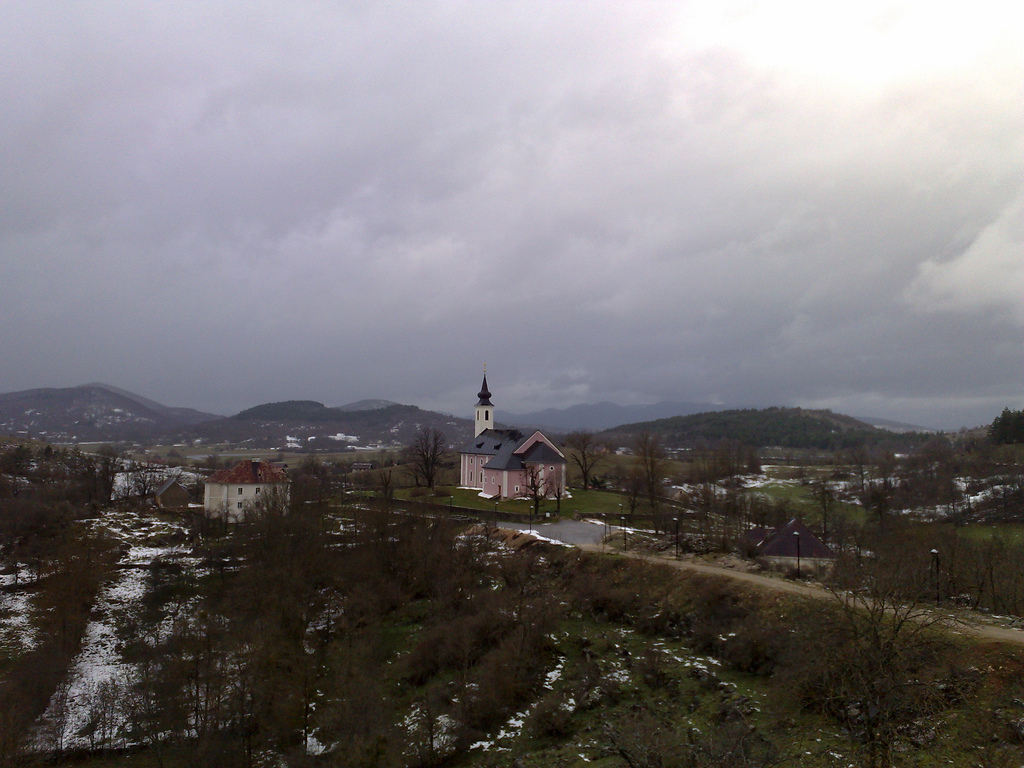
Ljubljana Castle
We had another morning in Ljubljana on our way back to Munich, after dropping off our car and before catching the train, so we took the funicular from the heart of old Ljubljana to the castle. Leaving Catherine-of-bad-knee down below visiting the museum, Oliver and I climbed the spiral staircase to the very top of the tallest tower in the castle and were rewarded the a commanding view of the city.
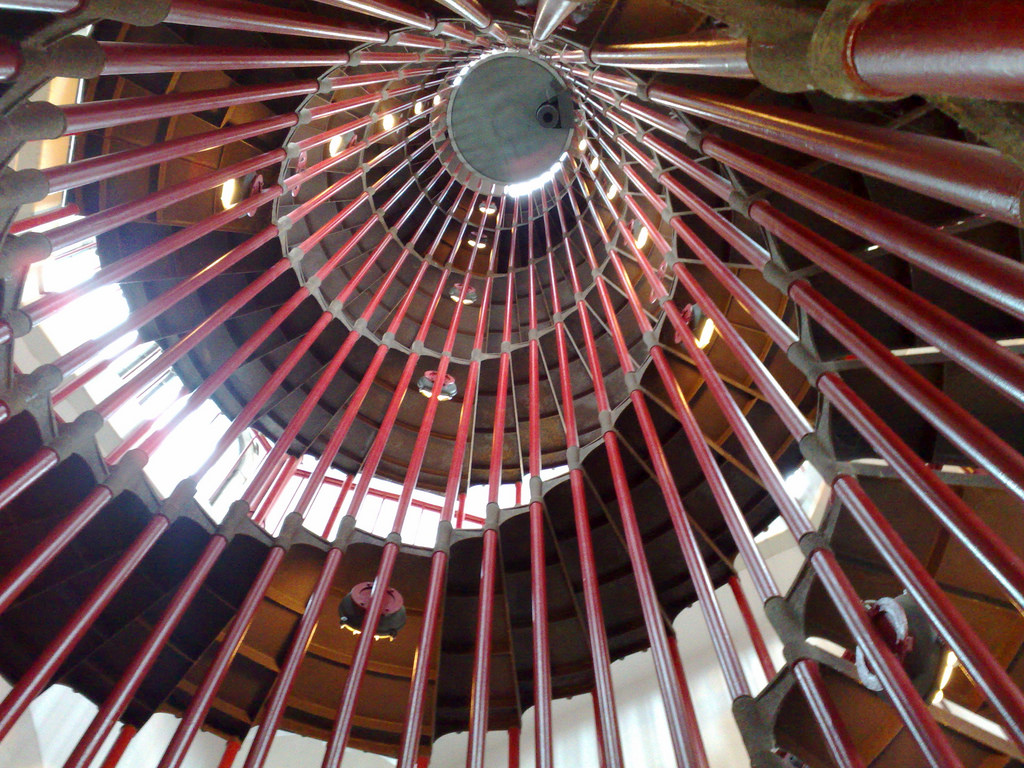
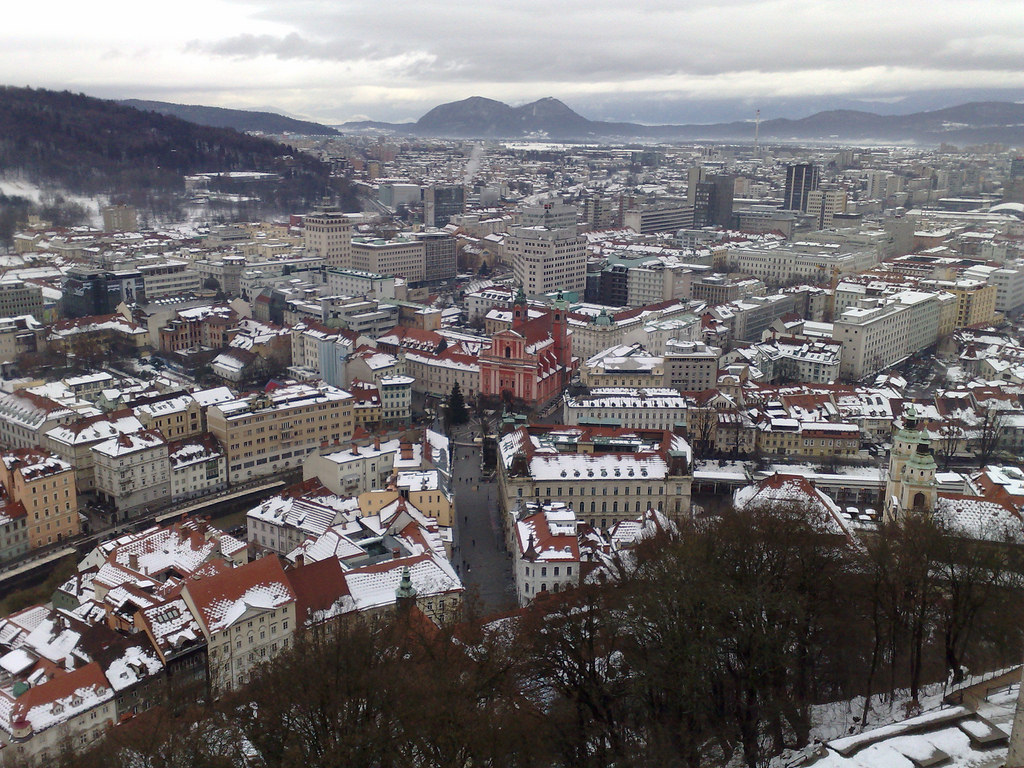
Deutsches Museum
The Deutsches Museum is the grandaddy of old-school science and technology museums; a sort of anti-Phaeno, filled with helicopters and printing presses and models of the universe. It’s wonderful in its own antediluvian way. We arrived, by chance, on a day when it was open only half a day, so we had to rush through in 3 hours, but paid no admission. For me there were two highlights: first, the cross-section of a Lufthansa jet, showing the seats, the luggage, the wings, the engines, and everything else in a way I’d never seen before:
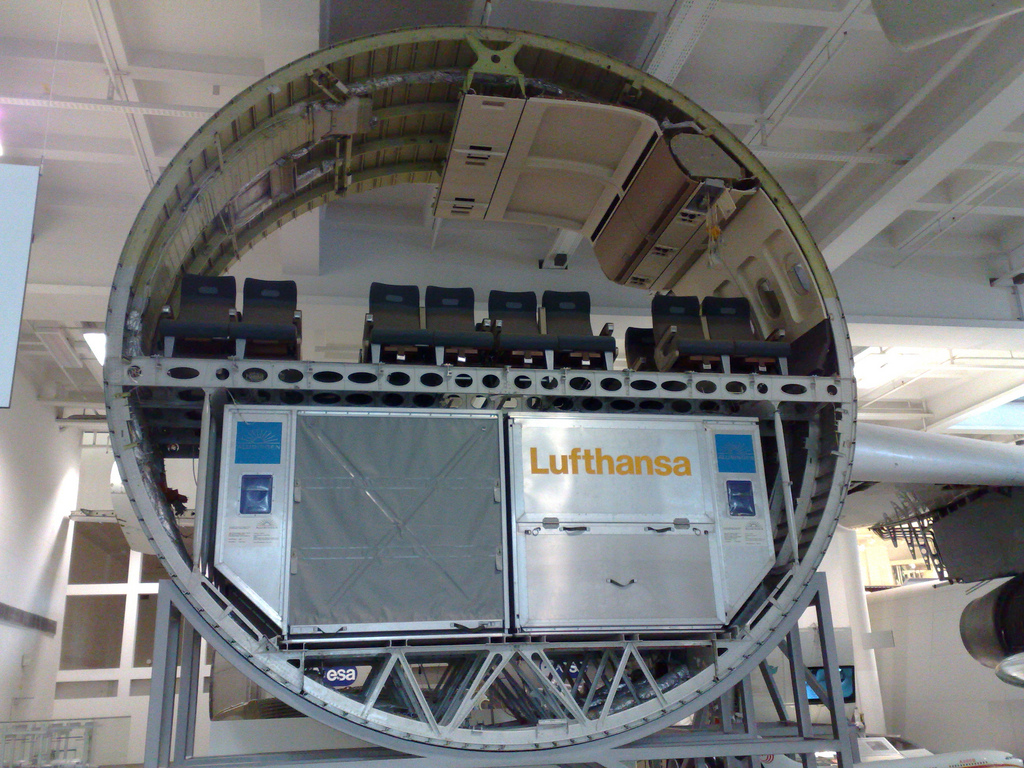
The other highlight was in the technology section: a demonstration of how machines can distinguish different denominations of change where you could put in different coins and see the count happening before you. It was “guts exposed” science museumology at its best:
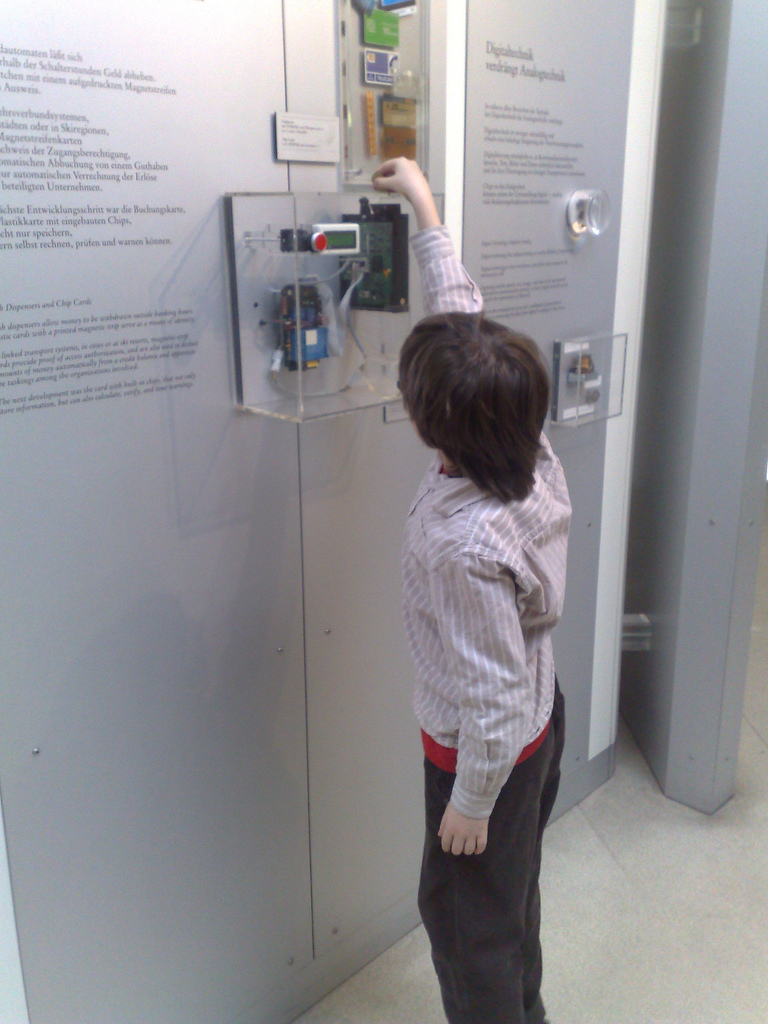
Sushi Sano
The last day of our trip, after leaving the Deutsches Museum, Oliver and I set off for a father-and-son lunch. Oliver was set on having sushi in Munich, and this was our last chance. Fortunately we found Sushi Sano nearby, a tiny sushi-and-noodles place with enough seats for about a dozen. All the seats were filled, so we took our sushi standing up. It was a great lunch.
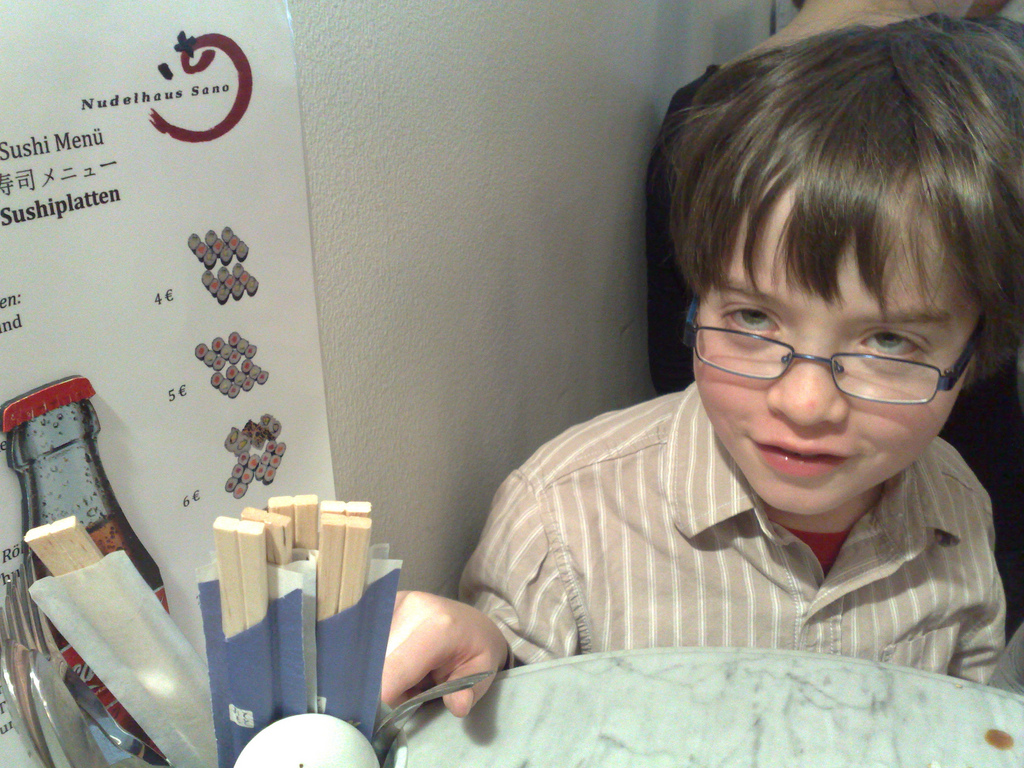
If you are a regular everyday person, Vitra is a company you’ve probably never heard of. Based in Weil am Rhein, Germany, it is a manufacturer of furniture for the office and home. Its products, generally licensed from prominent designers, are well-crafted and well-designed, and sometimes breathtaking.
The reason you’ve probably never heard of Vitra is that its products are also very, very expensive – like “$10,000 for a sofa” expensive – and thus beyond the reach of most.
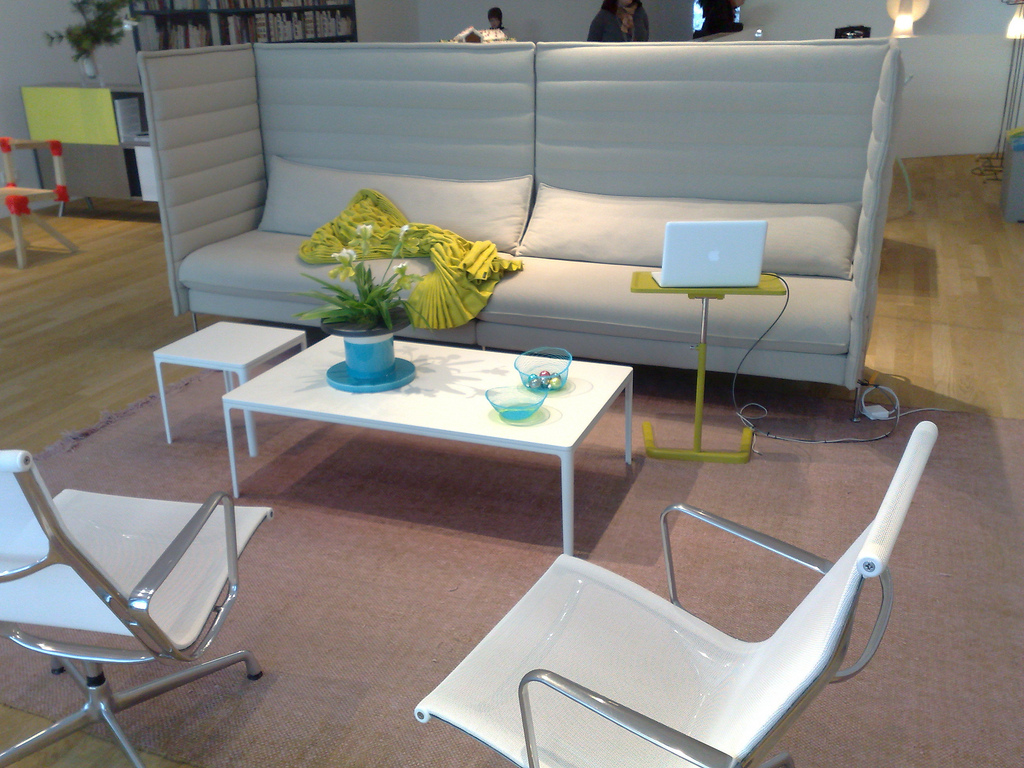
Which is not to say you can’t covet, and perhaps the greatest expression of covetousness you can pay to Vitra is to visit their “campus” in Weil am Rhein: we’ll likely never own a Noguchi Free Form Sofa, but we can pretend.
Precisely because its products command such prices, Vitra has been able to indulge itself with a rather dreamy headquarters; that much of their factory burned down in 1981 provided an opportunity to re-imagine their campus, and to showcase the work of some of the world’s most interesting architects. And so a visit to Vitra affords an opportunity not only to sit on unattainable sofas, but also to experience the buildings of Frank Gehry, Álvaro Siza, Zaha Hadid, and Herzog & de Meuron.
Though in Germany, Weil am Rhein is really just a suburb of Basel, Switzerland, so within easy reach when you’re visiting that city. To get there by public transit we took the tram across the Rhein to Claraplatz and then caught bus No. 55 directly to the Vitra stop (you can’t miss it). From central Basel the entire trip is about 45 minutes.
Our first stop was the restaurant in VitraHais, the Herzog & de Meuron-designed showcase for Vitra’s home furnishings line.
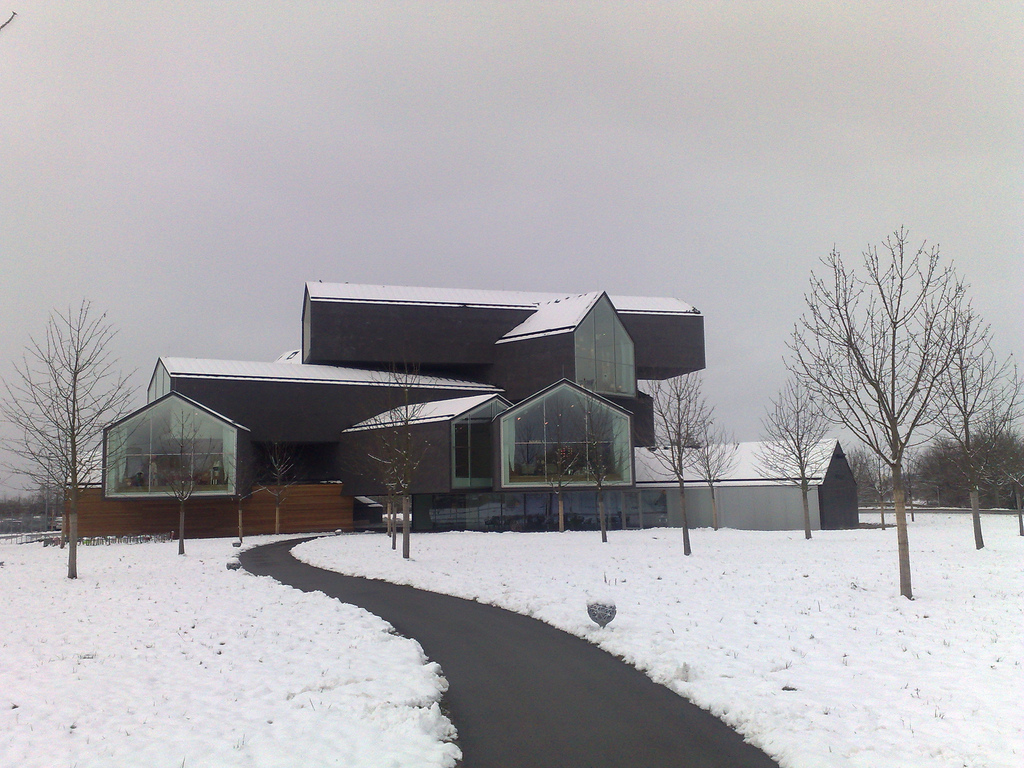
The meal was quite tasty, the environs spectacular, and the price pleasantly cheaper than we’d have paid for lunch across the border in Switzerland.
Our next stop was across the way at the Vitra Design Museum; we happened to arrive just as the 1:00 p.m. architectural tour was leaving, and the happy coincidence of other English-speakers in the group meant the usually-in-German tour was being offered bilingually. We hadn’t planned to take the tour, but decided to not pass up the chance.
The tour guide was friendly and knowledgeable and the tour took us behind the factory gates and provided an introduction to each of the major buildings on the campus. It ran about 2 hours, and was the highlight of our visit.
Among the buildings we learned about were the Frank Gehry-designed factory building, the Jean Prouvé gasoline station and the Buckminster Fuller geodesic dome (the latter two more collectors items than an integral part of the factory campus, but interesting nonetheless):
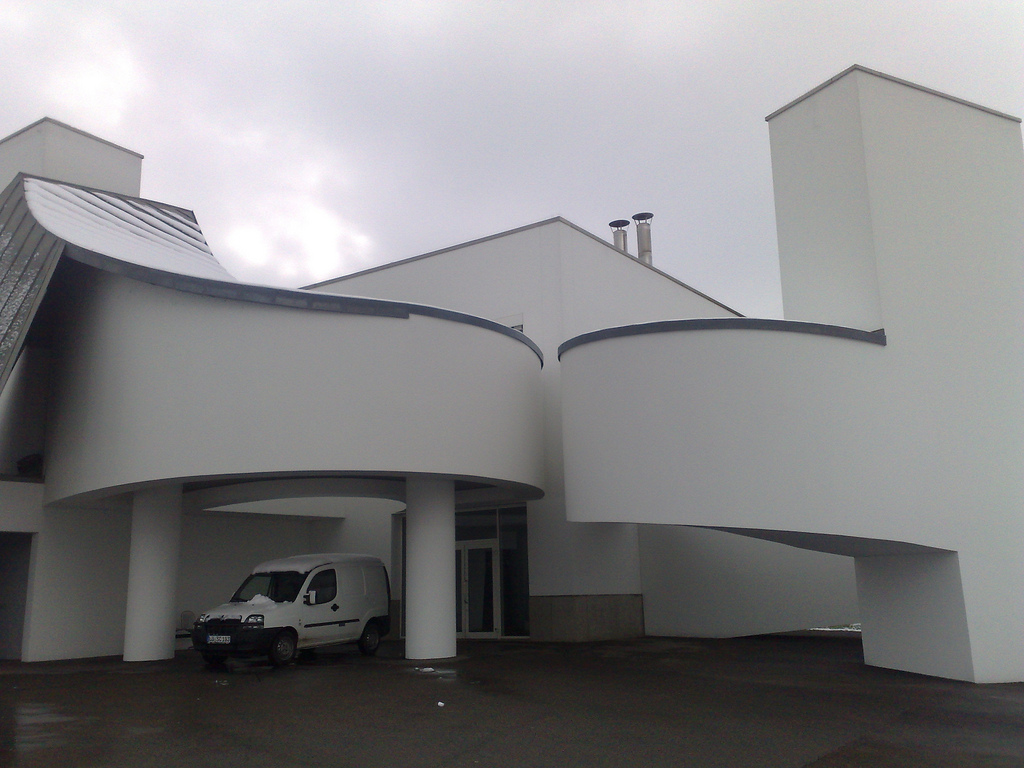
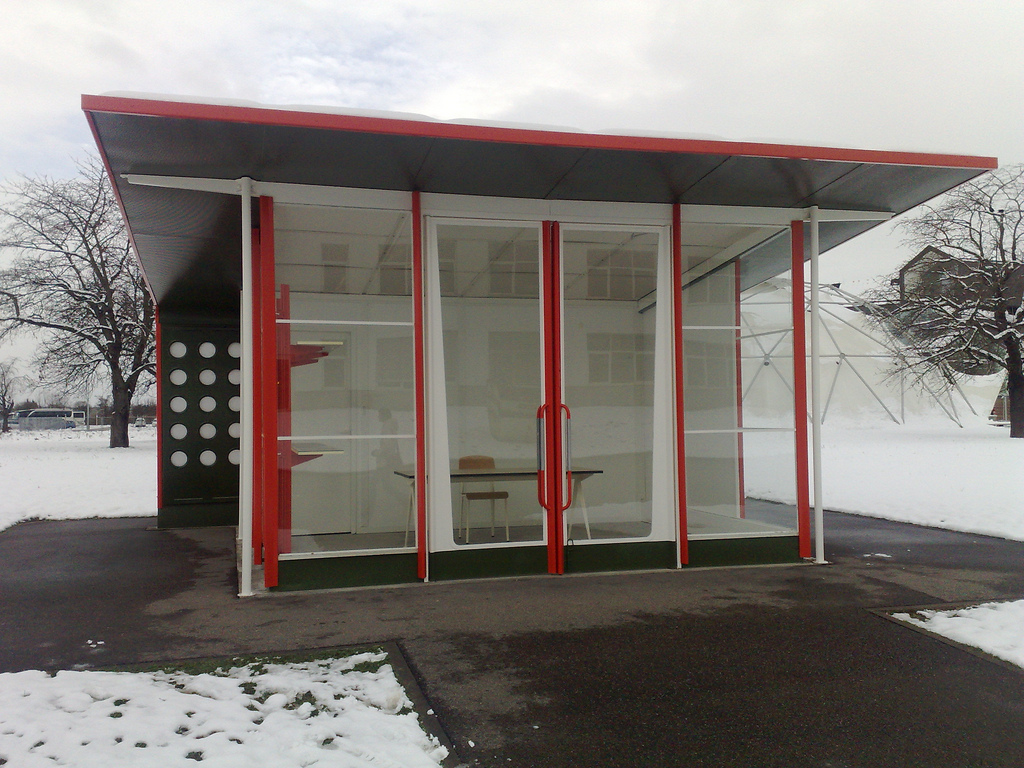
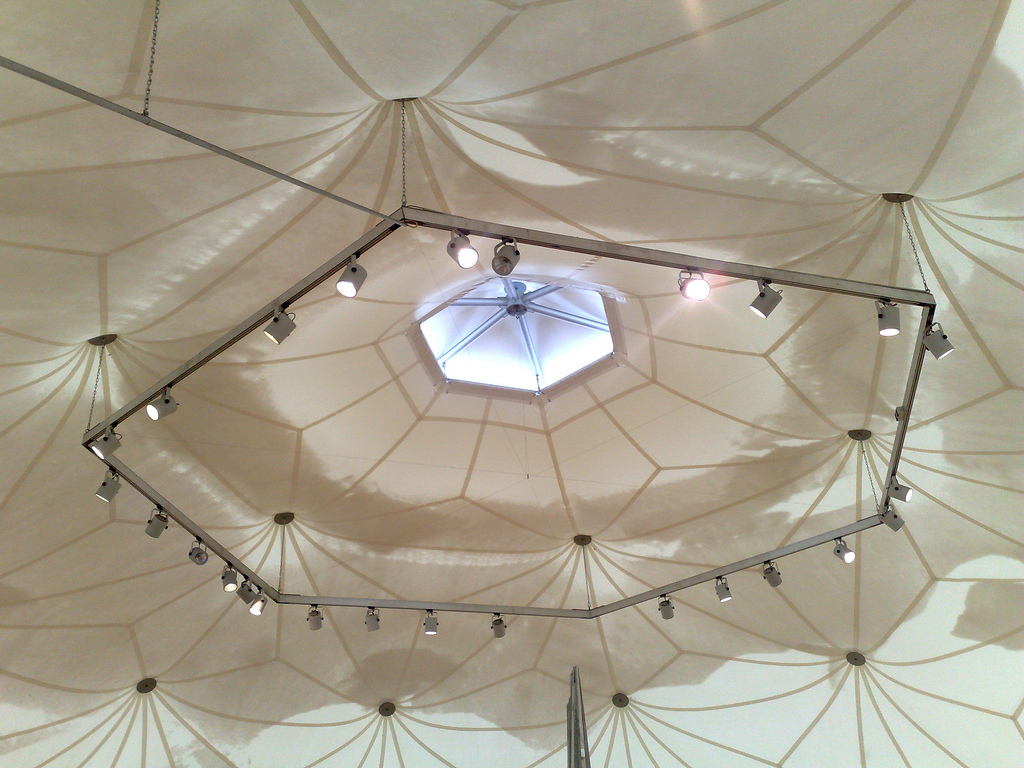
By far and away the most interesting part of the tour was the Zaha Hadid fire station. Originally constructed to mitigate against further problems with the factory burning down, the life of the building as a fire station proper was short-lived, as the surrounding community built its own fire station two years after it opened in 1983. The building is empty now, which means that visitors on the tour are free to ramble all through it.
Oliver and I got to know Hadid’s work when we visited the fantastic Phaeno museum in Wolfsburg in the spring. There are obvious echoes of the fire station in Phaeno – the cast concrete, the angular forms that seem like they shouldn’t work in the physical world – and it was nice to get a chance to experience the fire station up close.
It’s a freaky building: our guide explained that one of the design goals was (somewhat inexplicably) to have the firefighters never feels completely at ease. It certainly achieves that goal: the lack of any privacy, the stark spaces, the confusing angles, mean that you can never really relax in the building.
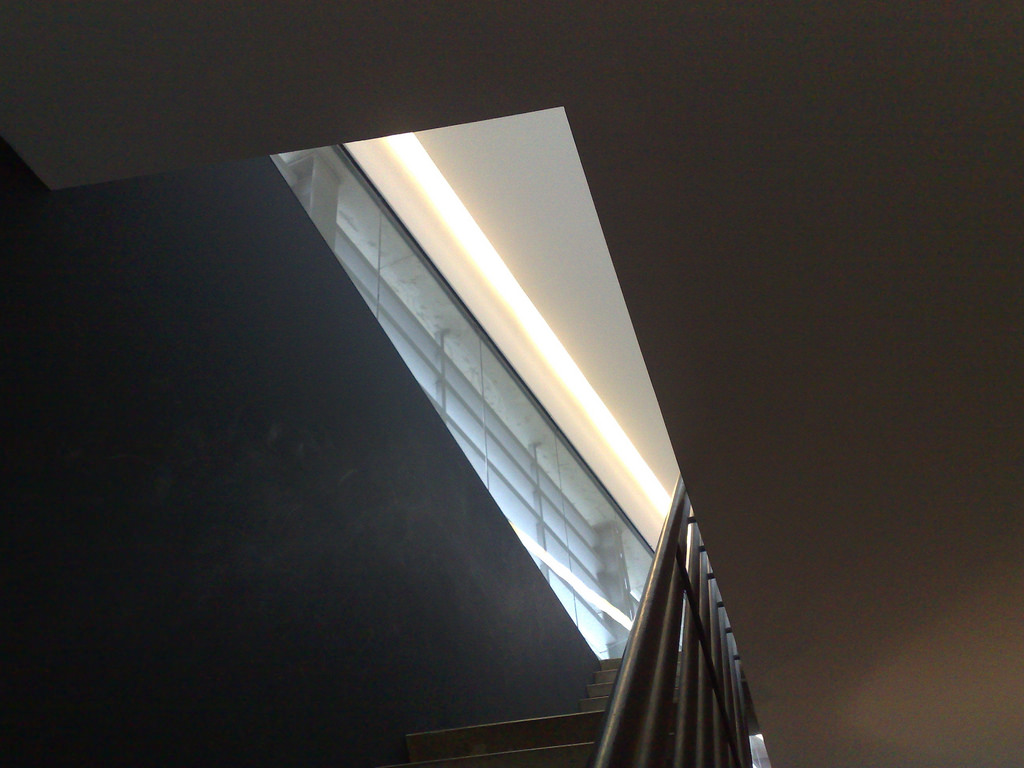
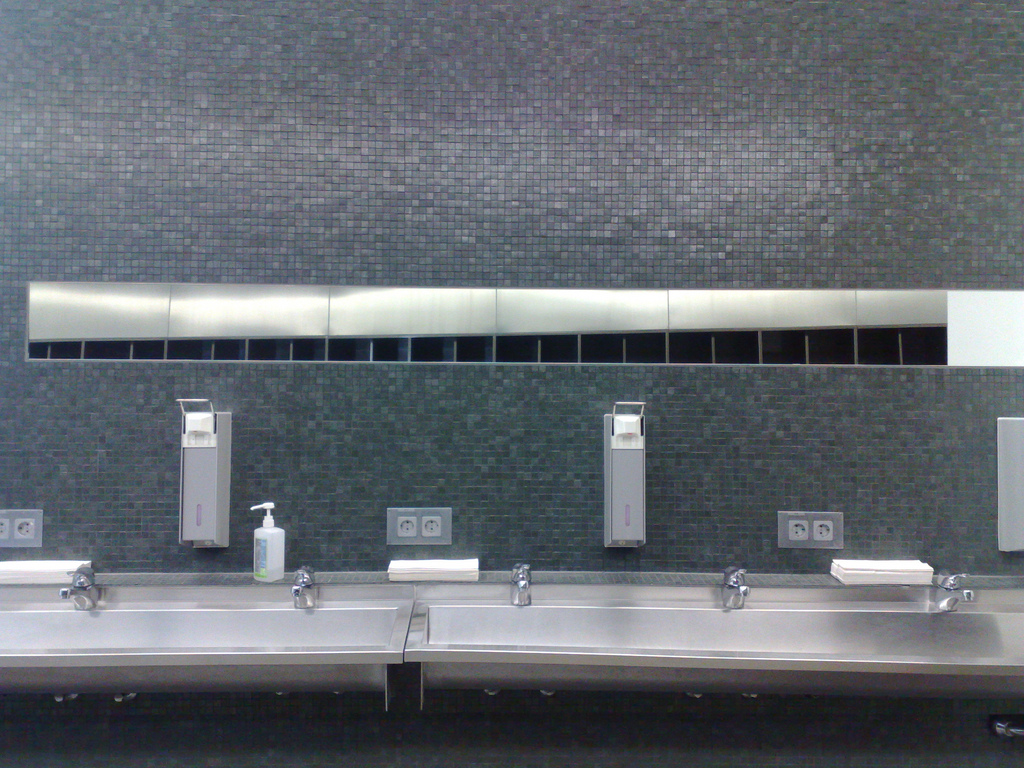
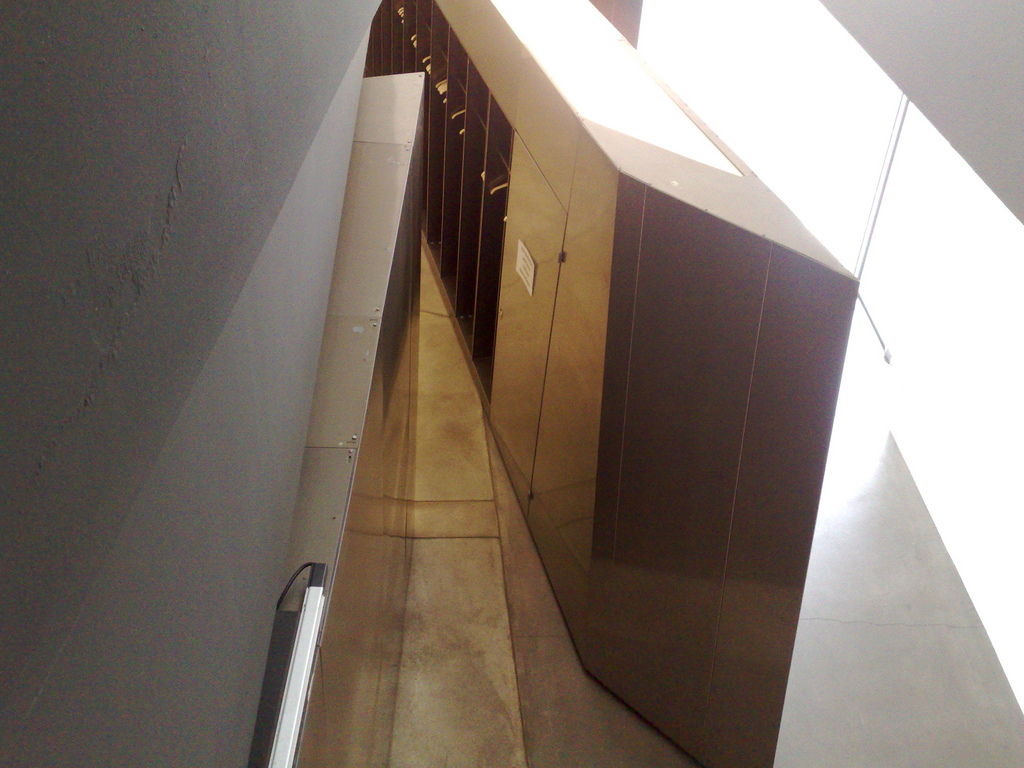
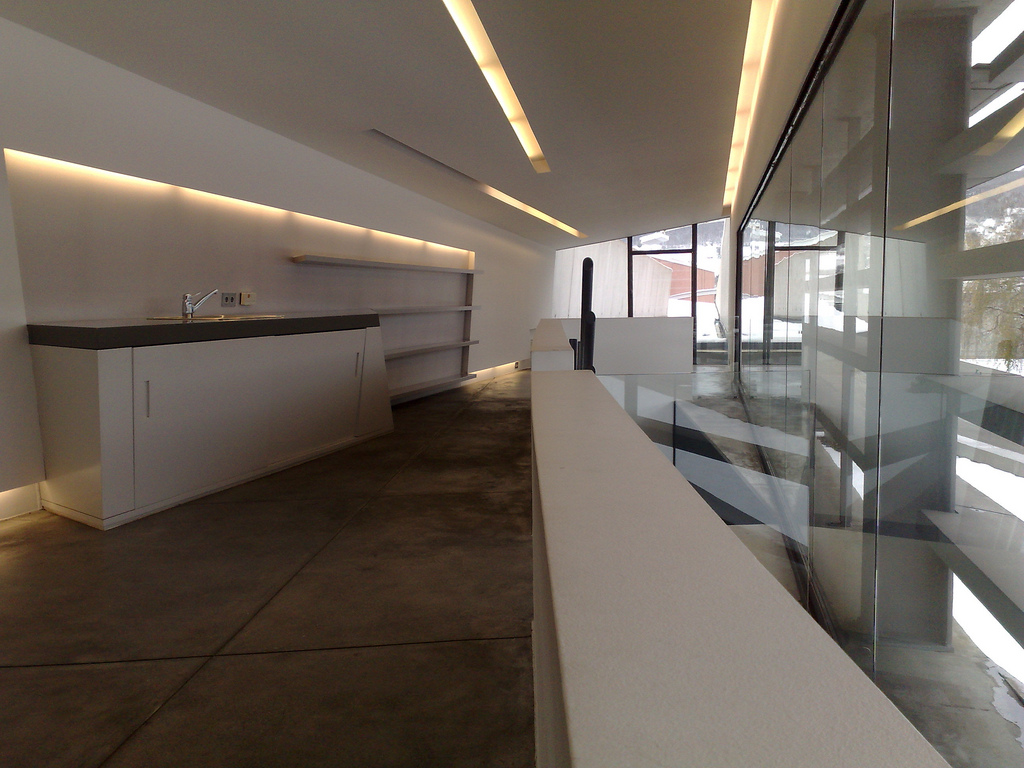
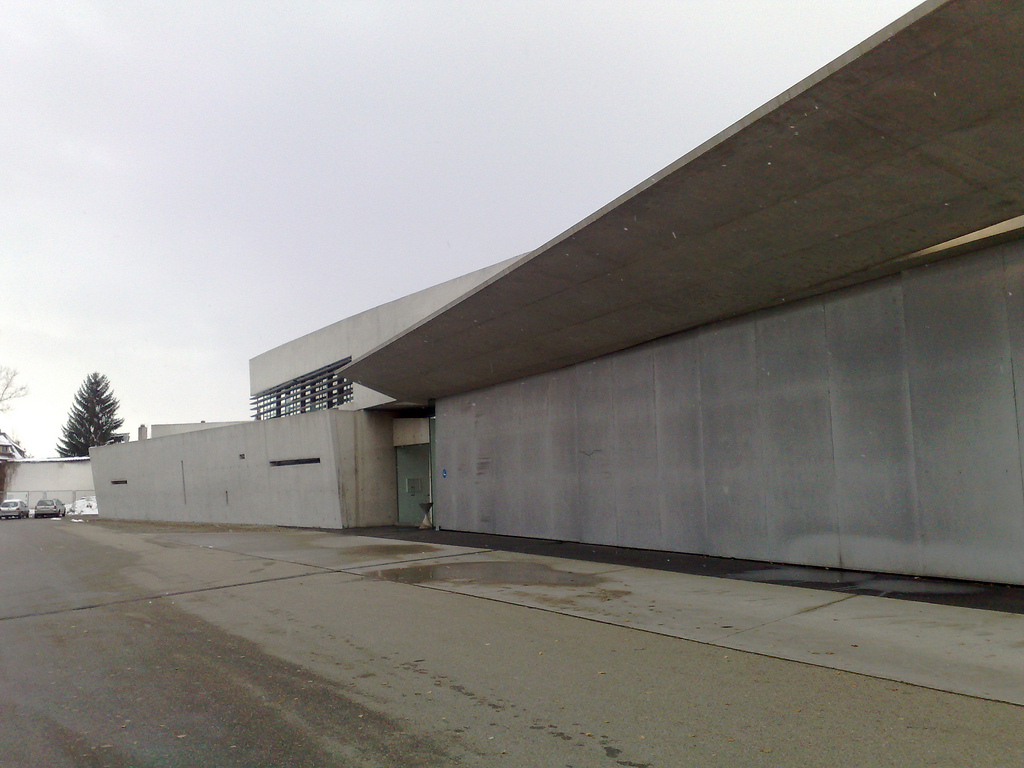
The building is brilliant and disturbing and deeply, deeply interesting, and Vitra deserves credit for giving Hadid free reign to re-imagine what a fire station might look like and how it might fit together.
The tour finished in the partly-underground conference centre designed by Tadao Ando. Although built from stark concrete, it’s an oddly comforting building to be inside, filled with unexpected intimate spaces and interesting twists and turns.
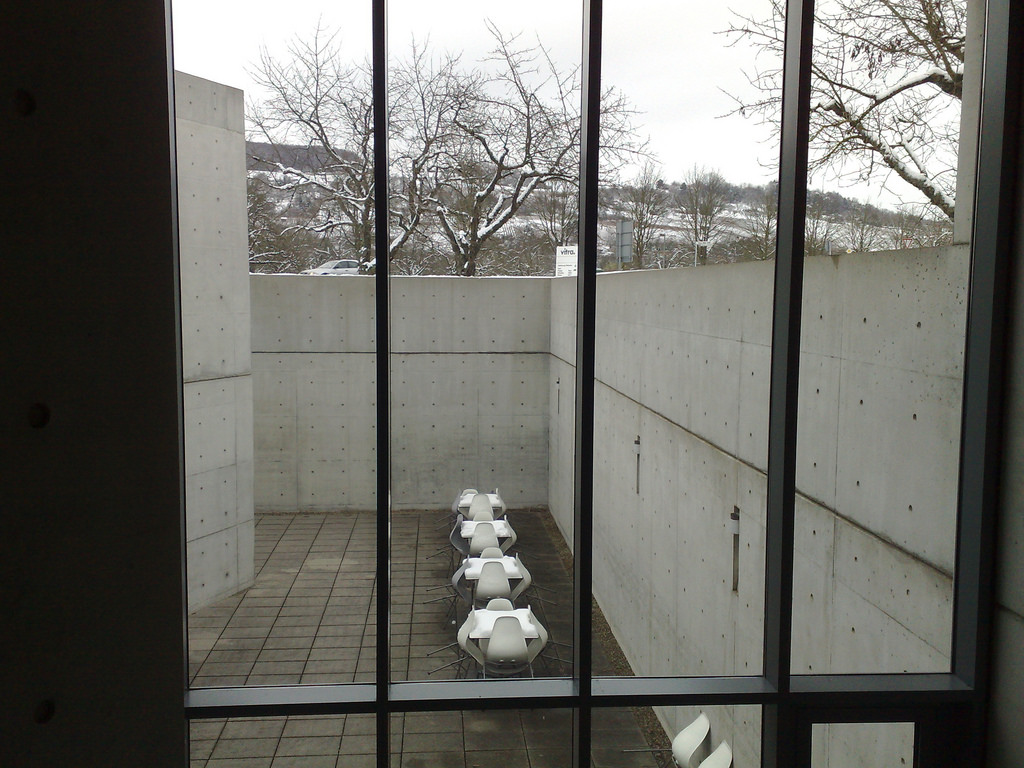
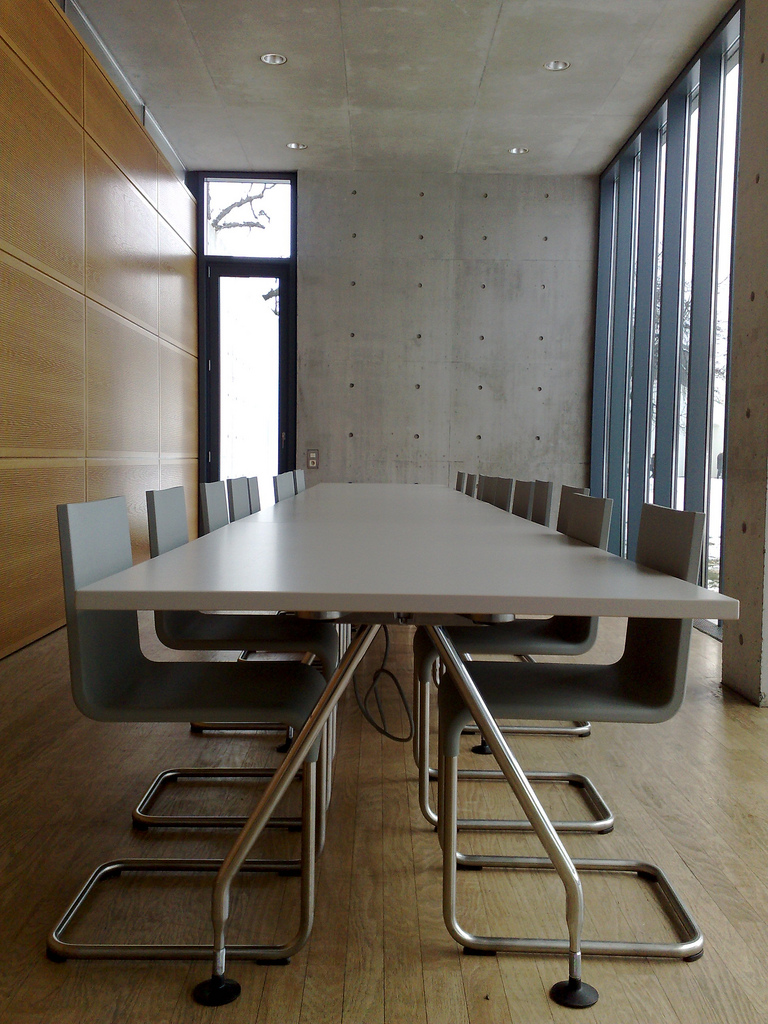
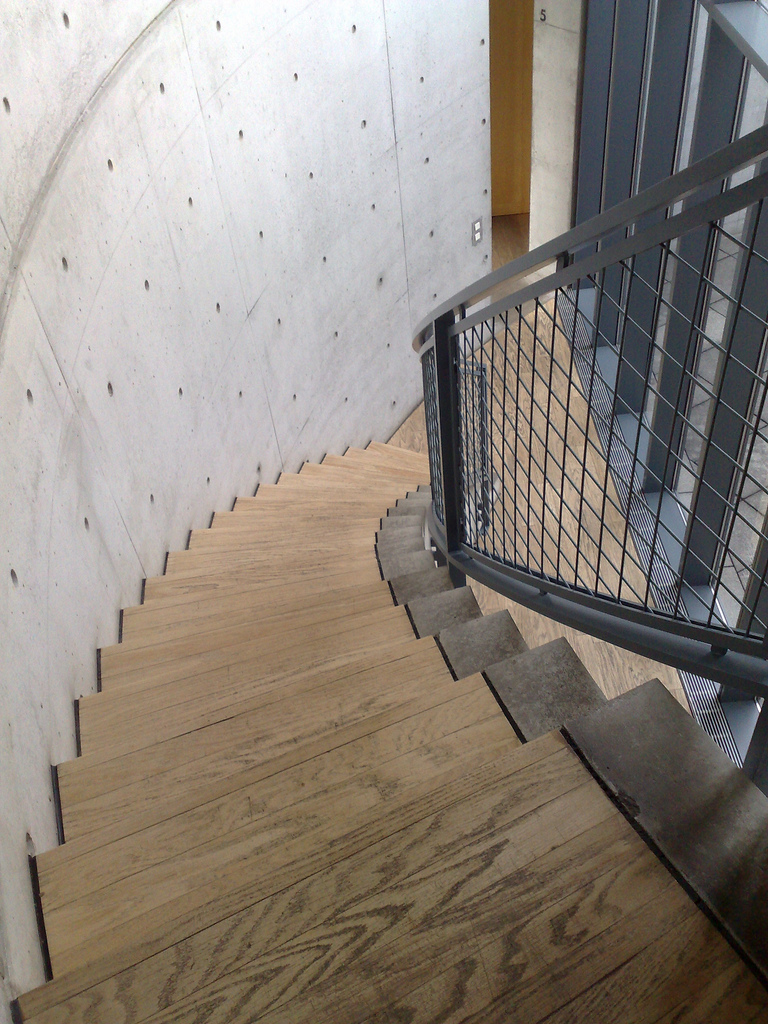
With the tour finished, we were left to our own devices in our original destination, the Vitra Design Museum. The museum has no permanent collection, and thus shows a series of ad hoc exhibitions: during our visit the architectural models of Frank Gehry were on display (thus re-confirming our status Gehry groupies, a journey that’s taken us to the dancing building in Prague, the Guggenheim in Bilbao and to Experience Museum Project in Seattle).
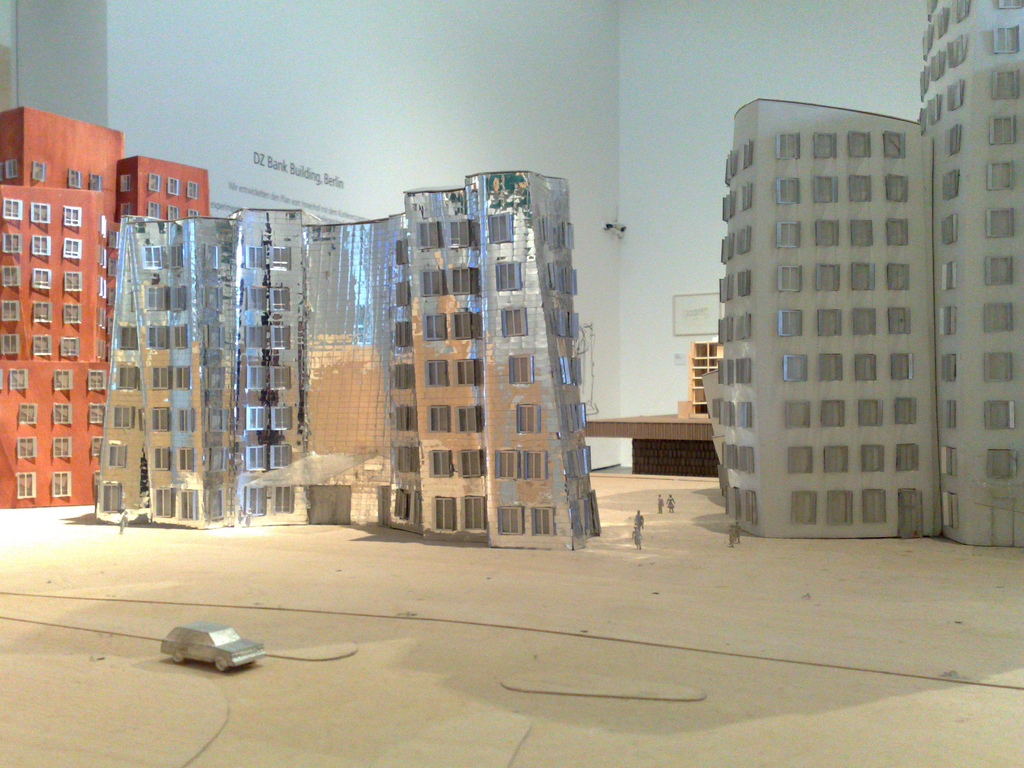
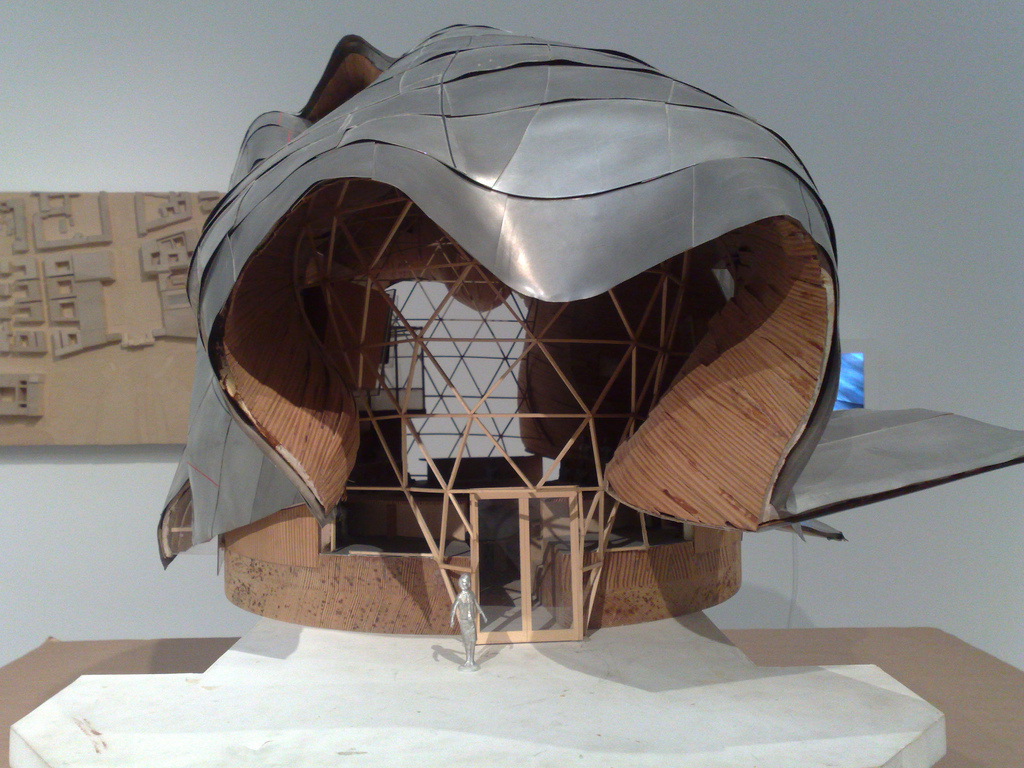
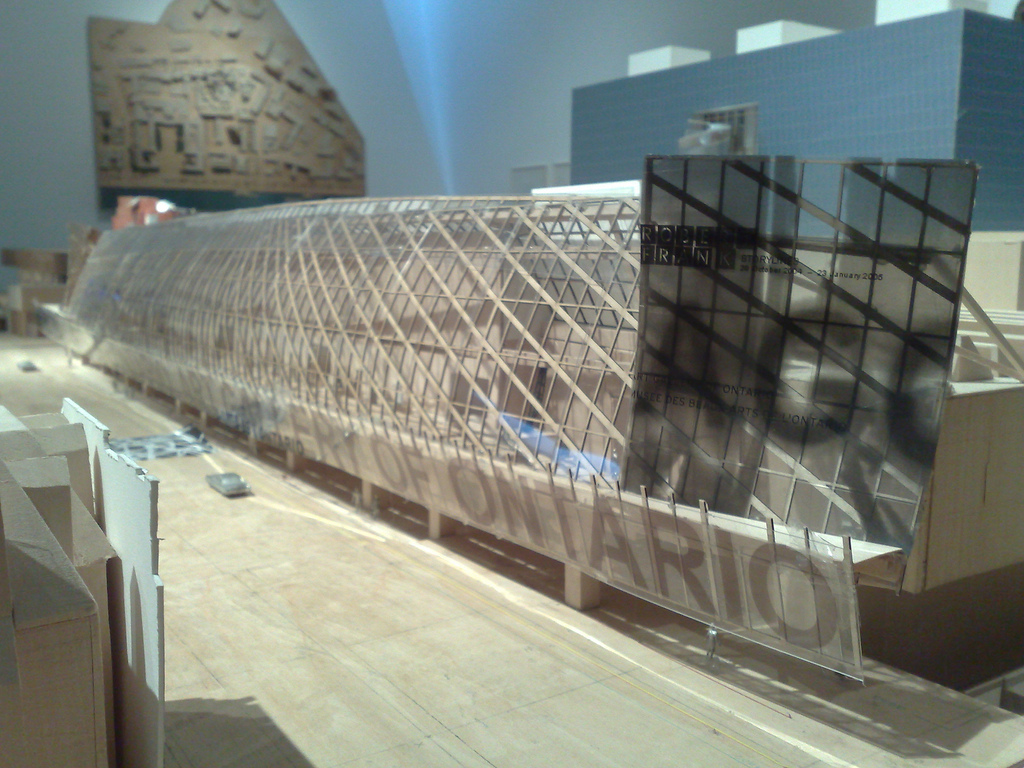
We finished our visit to Vitra back where we started, in VitraHaus, experiencing the unattainable furniture. Although each of the buildings at Vitra is interesting, VitraHaus is perhaps the most impressive and most functional: its soaring, light-filled spaces are a perfect showcase for Vitra’s products.
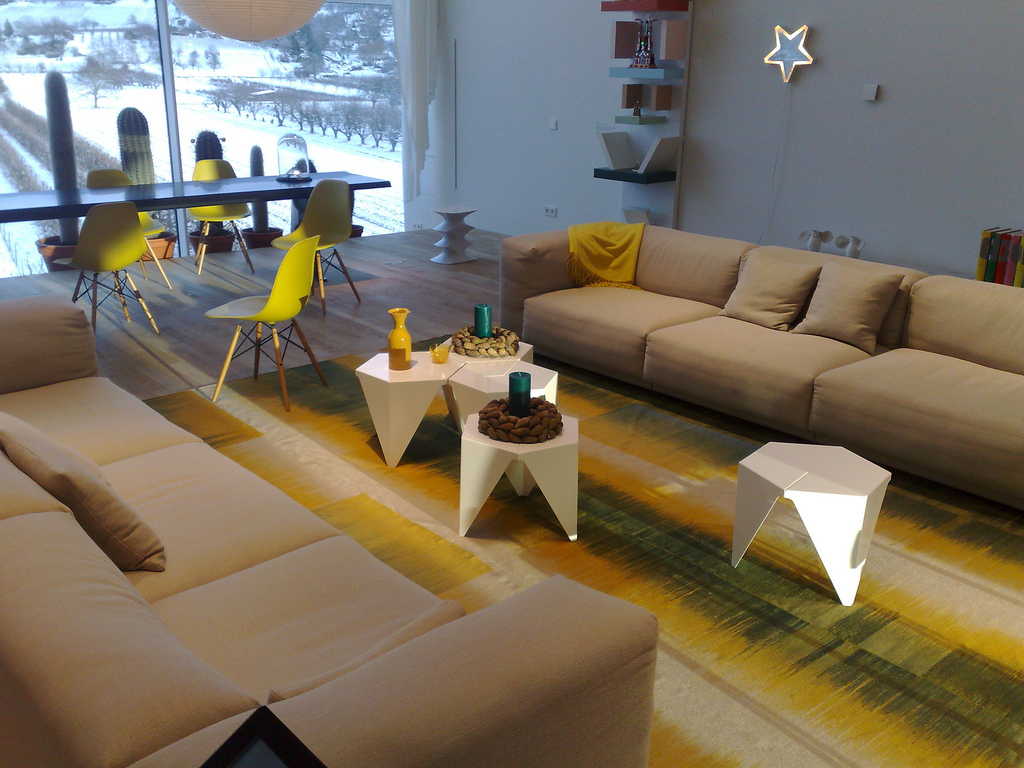
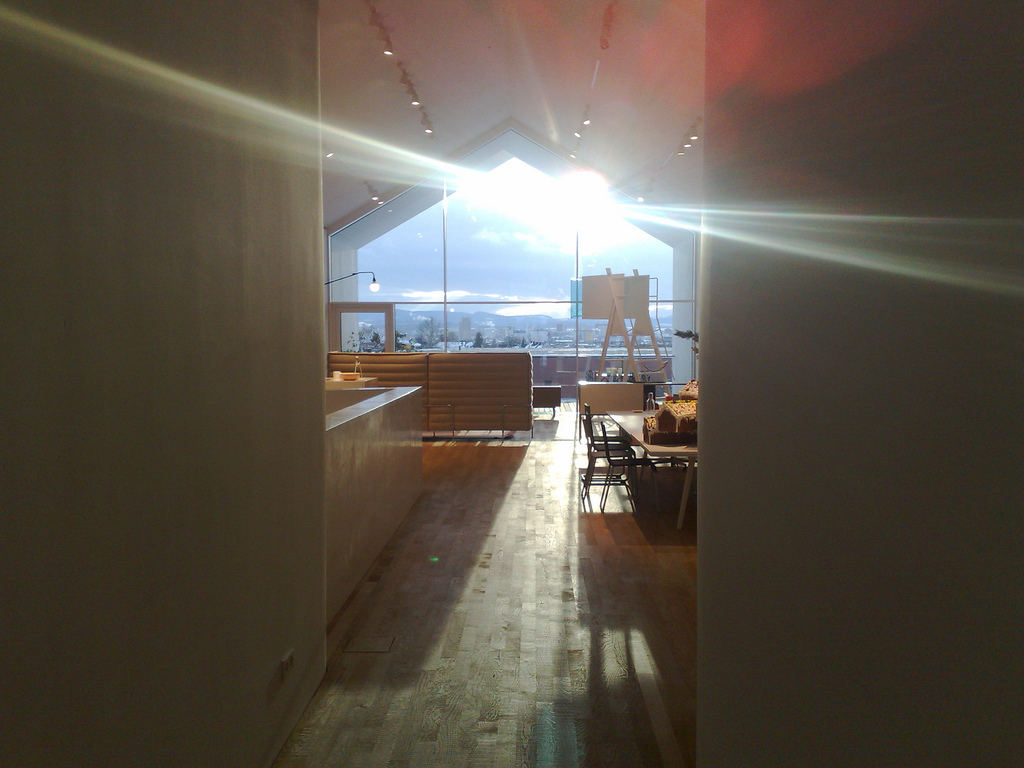
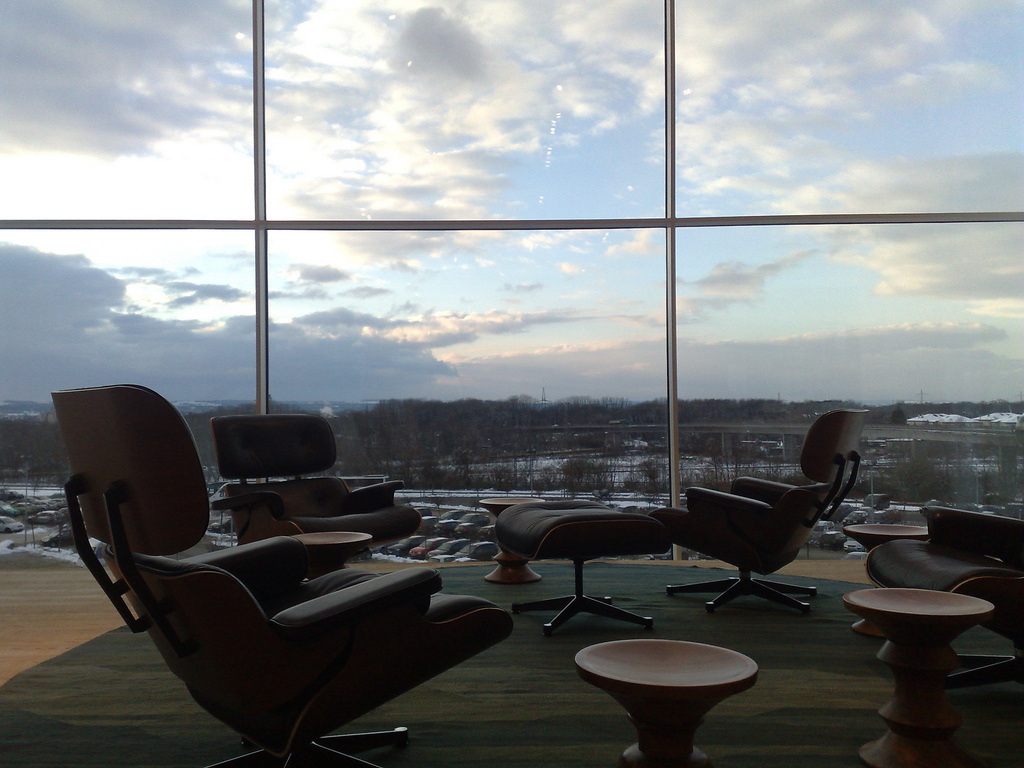
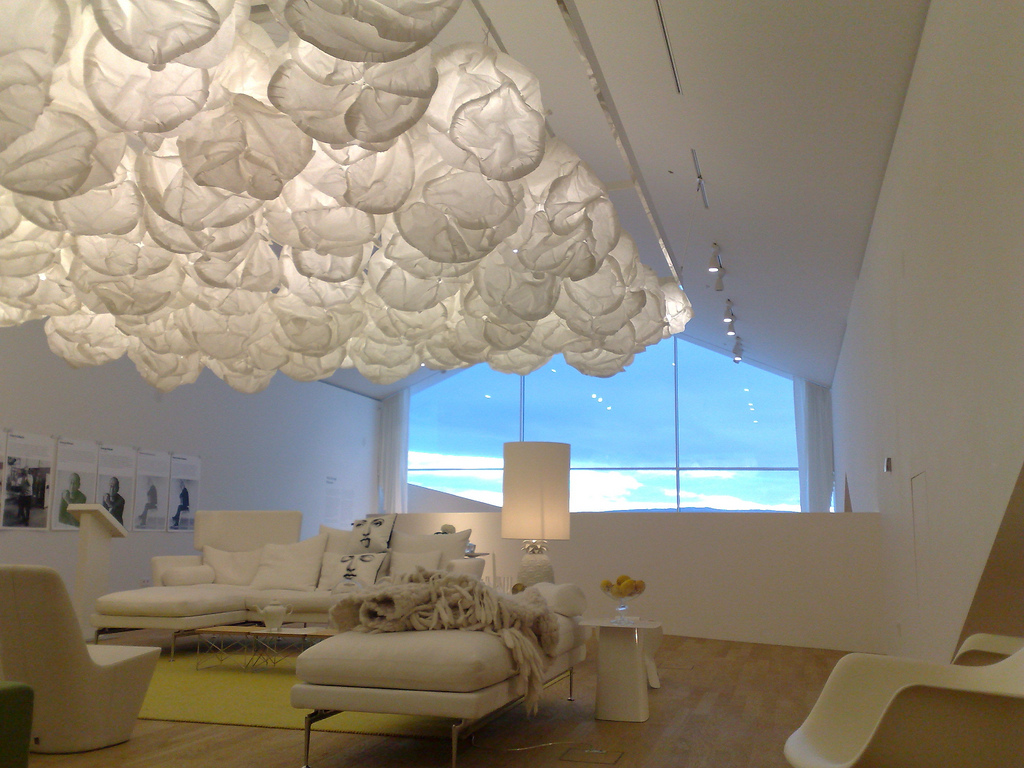
We finished up with a quick run through the Design Museum gift shop (filled with slightly-more-attainable smaller items) and then it was off into the twilight to catch the bus back to Basel.
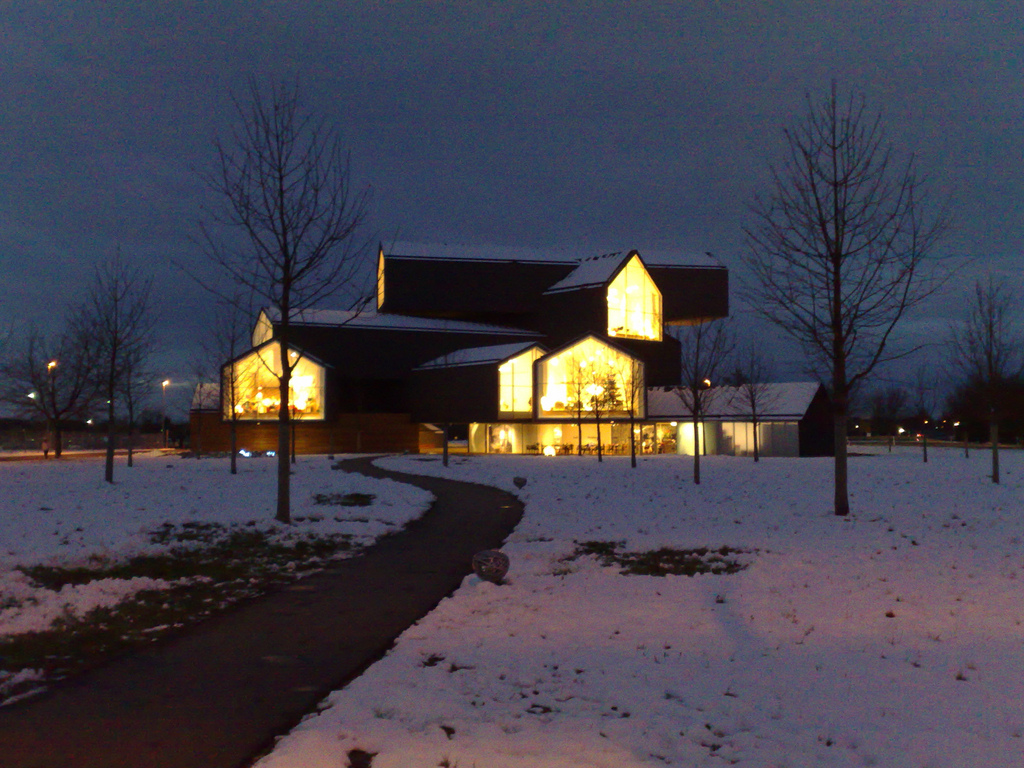
The writing is on the wall for del.icio.us, so, as a preemptive move, I grabbed the 2,193 bookmarks I’ve put there since June 23, 2005. I’m reluctant to join the rush to Pinboard as a replacement, as the “issue” here is not Yahoo! but rather the entire notion of lazily outsourcing data management to companies with an ephemeral approach to infrastructure.
The “social” part of del.icio.us never really took off for me – Olle and Luisa were the only deliciousians that I leveraged the service with – so I’m considering simply importing my bookmarks to become, well, bookmarks, but inside the browser. Not sure with the performance implications for browser start-up and operation are on Firefox and Chrome, but a little experimenting should show whether there’s any down-side to this.
My next project is to consider whether outsourcing my photo management to Flickr, another Yahoo! property, is a wise move. It’s a worry I’ve had for a long time, one that flared during the discussions of a Microsoft takeover, and one I need to return to. In theory I should be able to cobble together a Drupal solution that does everything except replicate the “social” of Flickr (of which I have taken advantage), but even with innovations like CCK and Image Cache, Drupal image management is still an only partly-baked pie. But maybe I need to get into the kitchen.
Update: I’ve also been able to get my bookmarks as an XML file from https://api.del.icio.us/v1/posts/all.
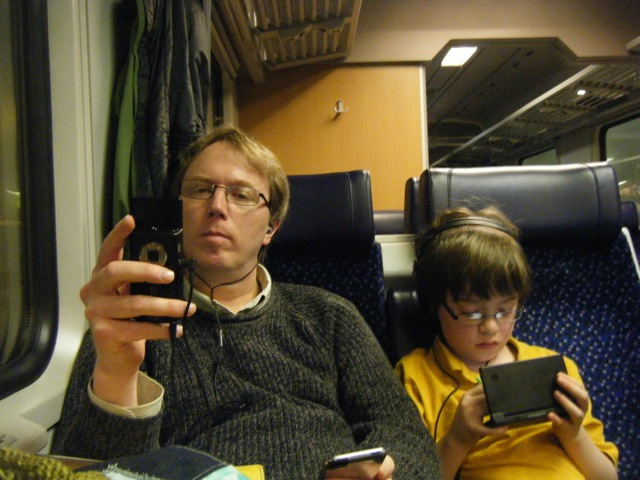
 I am
I am